I washed my hair in the lake were we had parked at since the water was not too cold and easily accessible.


We went on a beautiful forest hike along a wild stream with raging cold water, starting in Storjord.
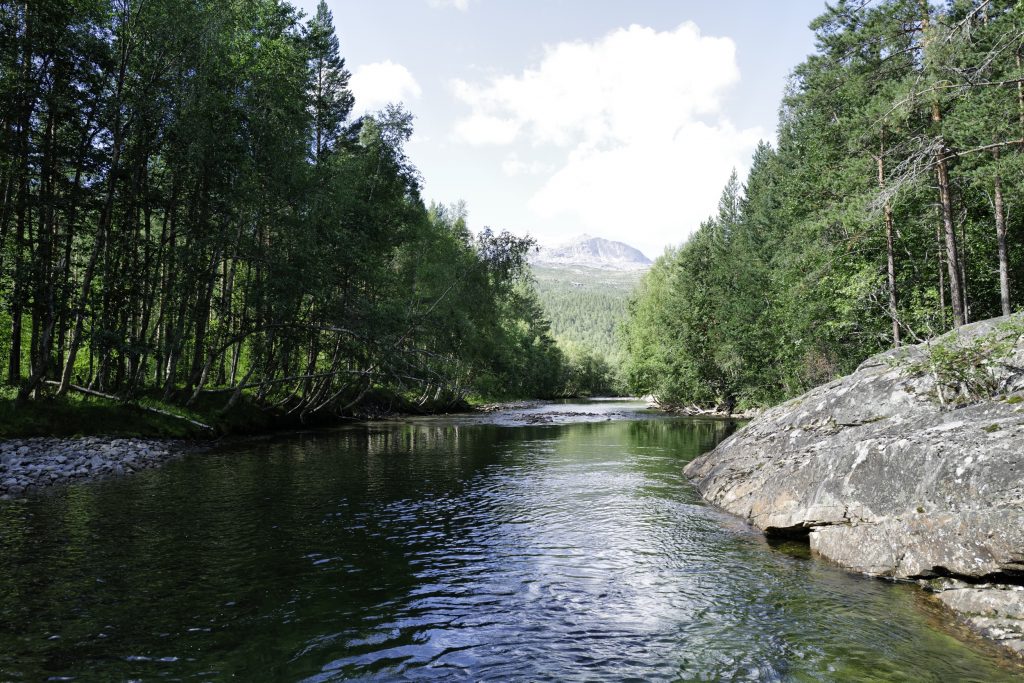
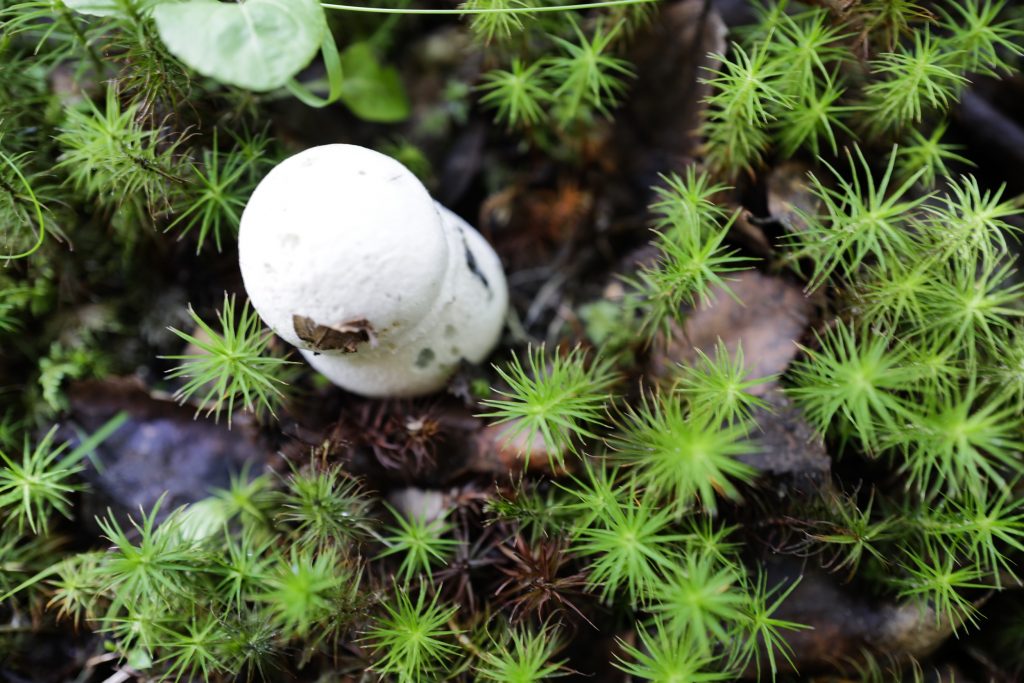
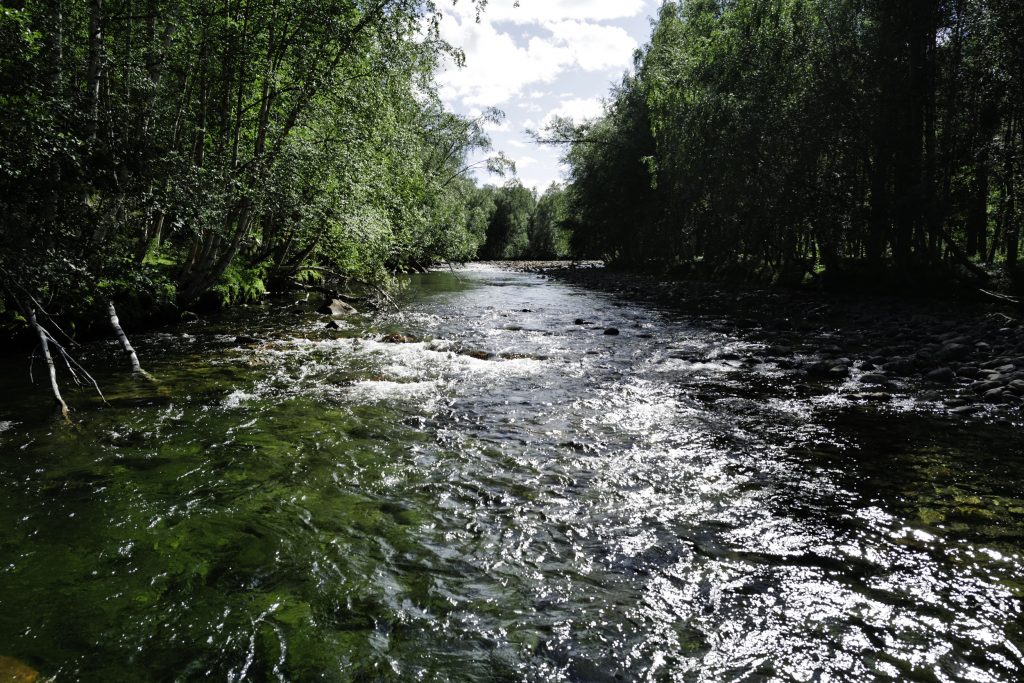
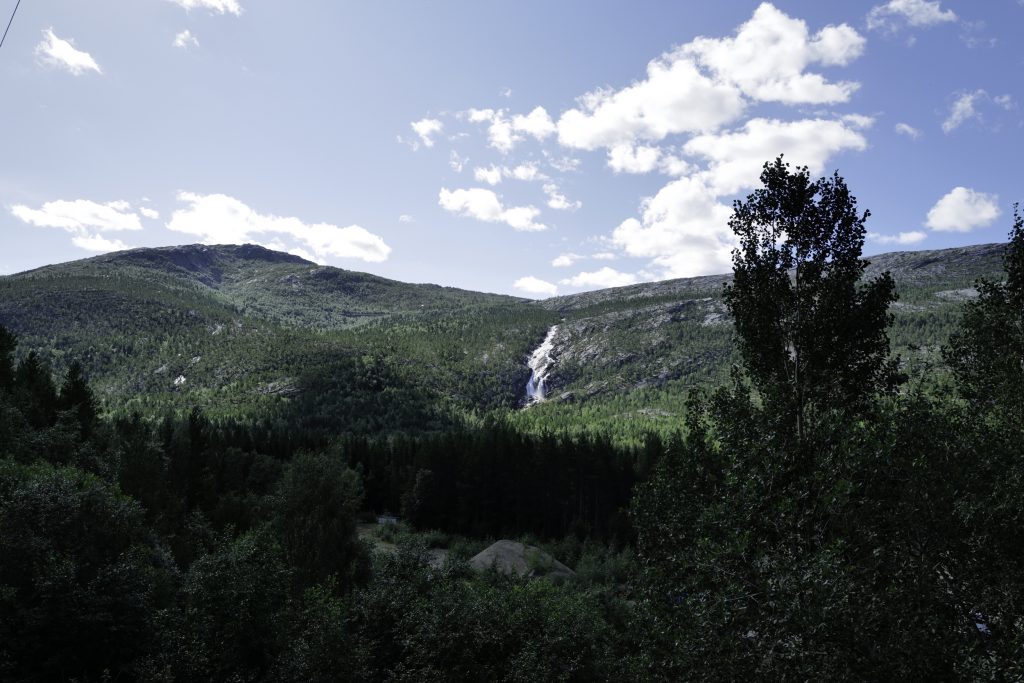
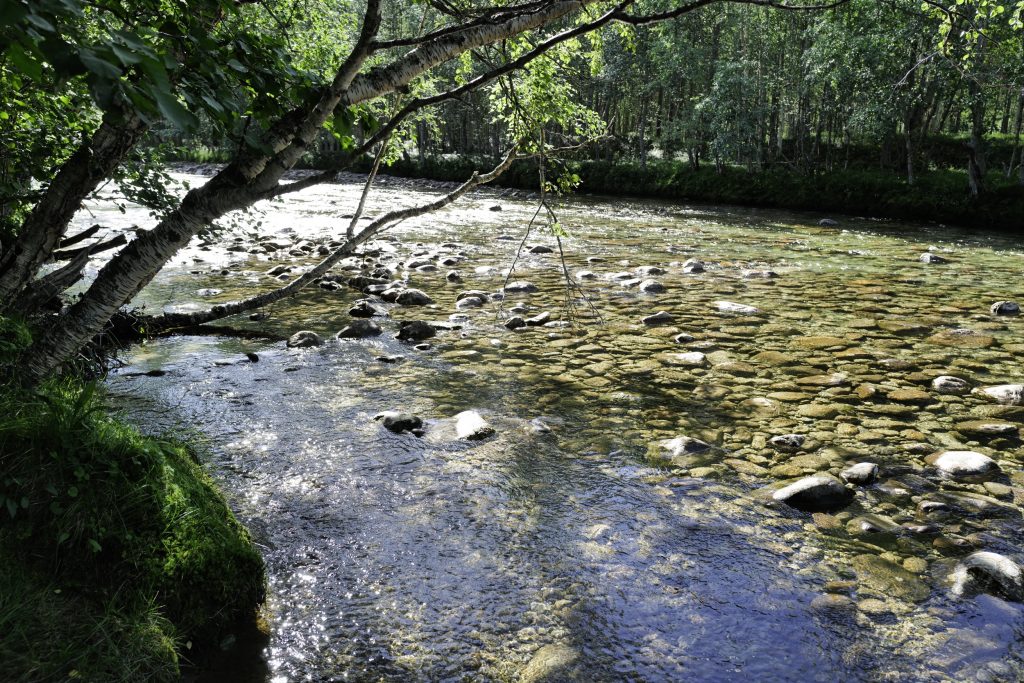
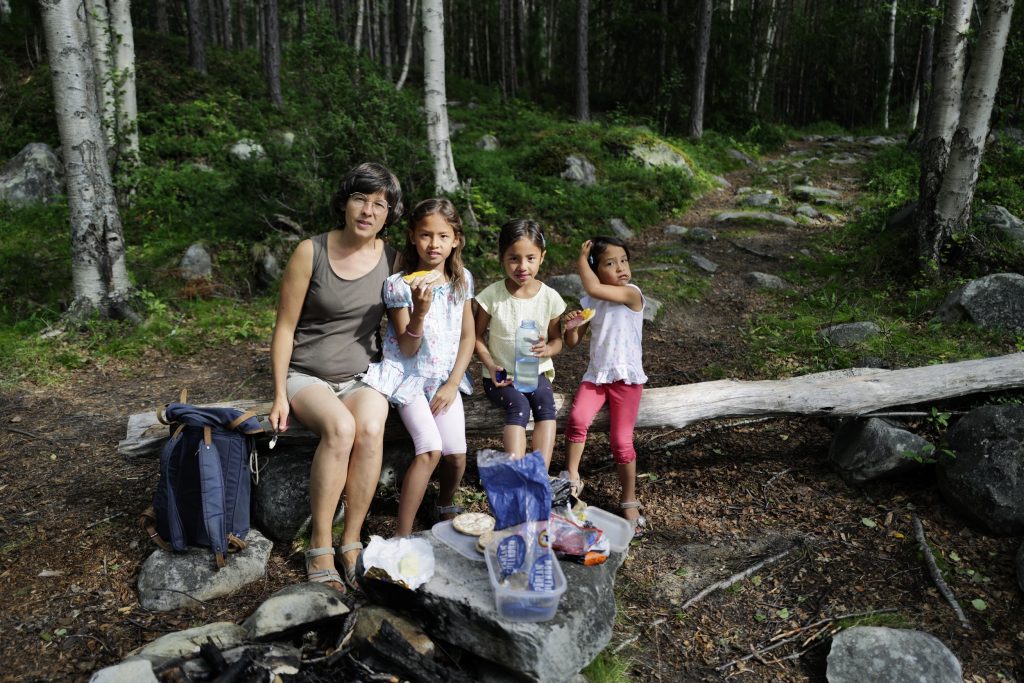
We took hours to reach the water fall that was only 3 km away because we were so busy picking huge blueberries and 22 mushrooms (orange birch bolete & birch bolete; around 2 kg of which 1 kg was left after cleaning).
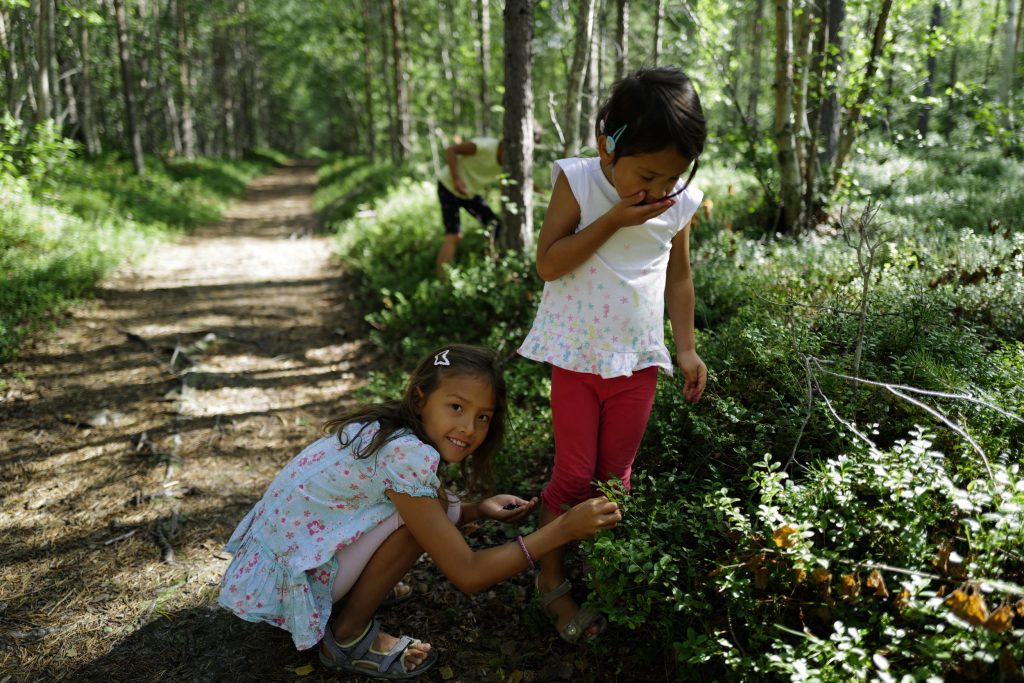
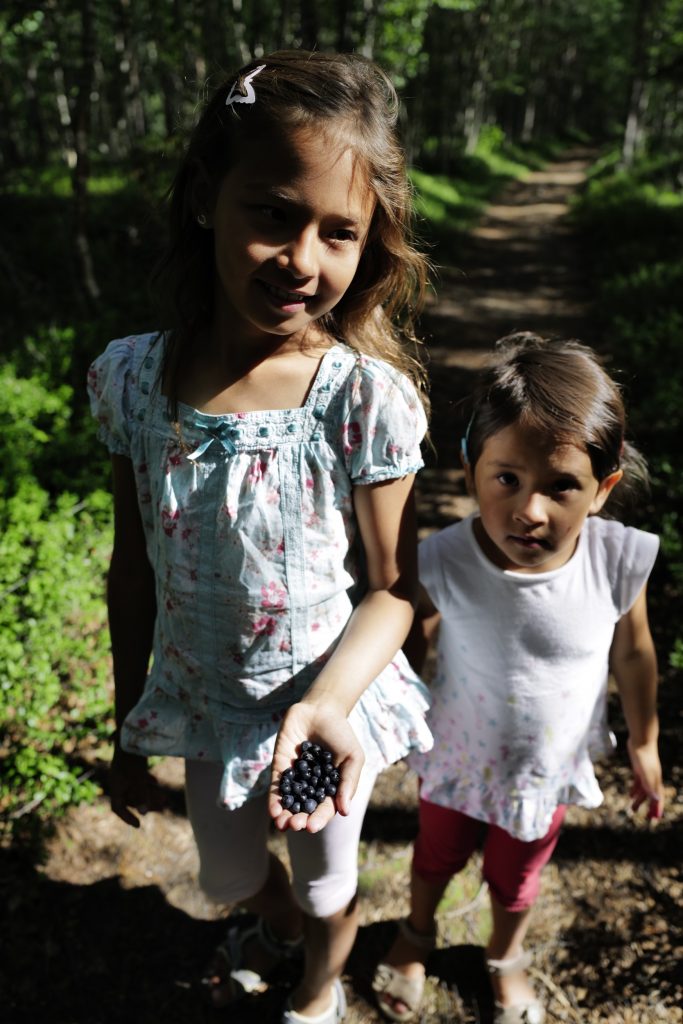
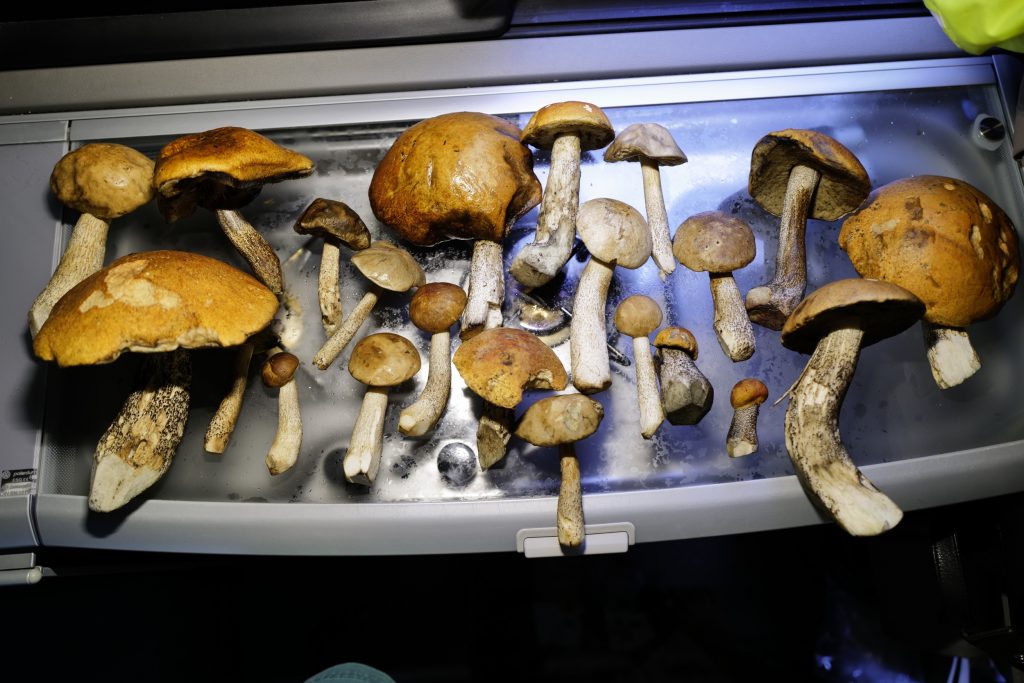
A suspension bridge and walking on the rocks along the river were fun. We had to laugh quite hard when a squirrel ran over the suspension bridge two times.





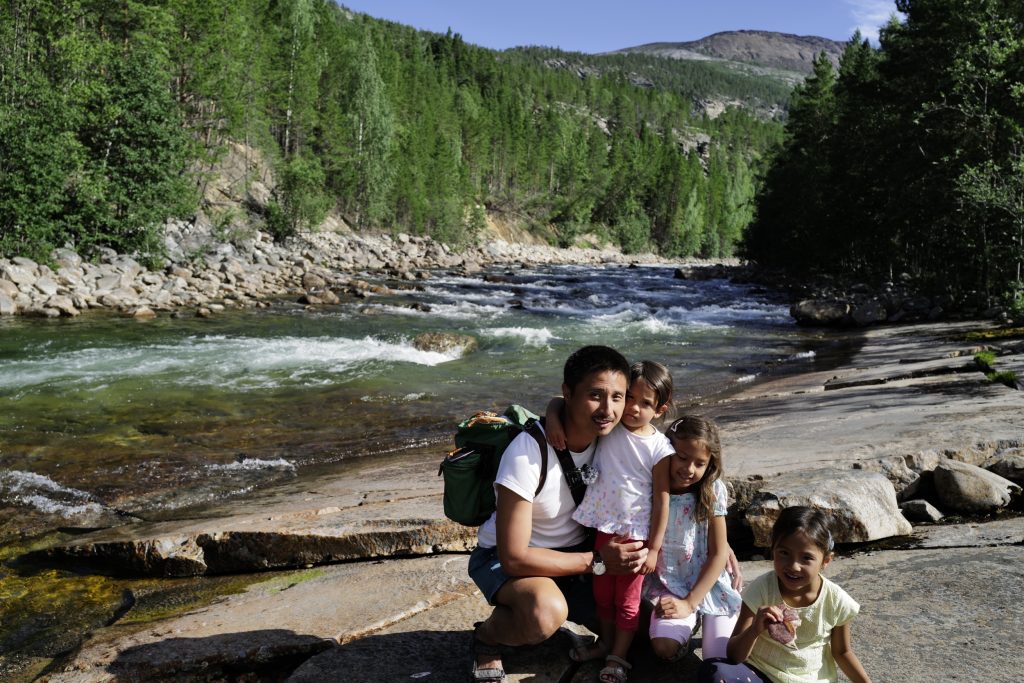
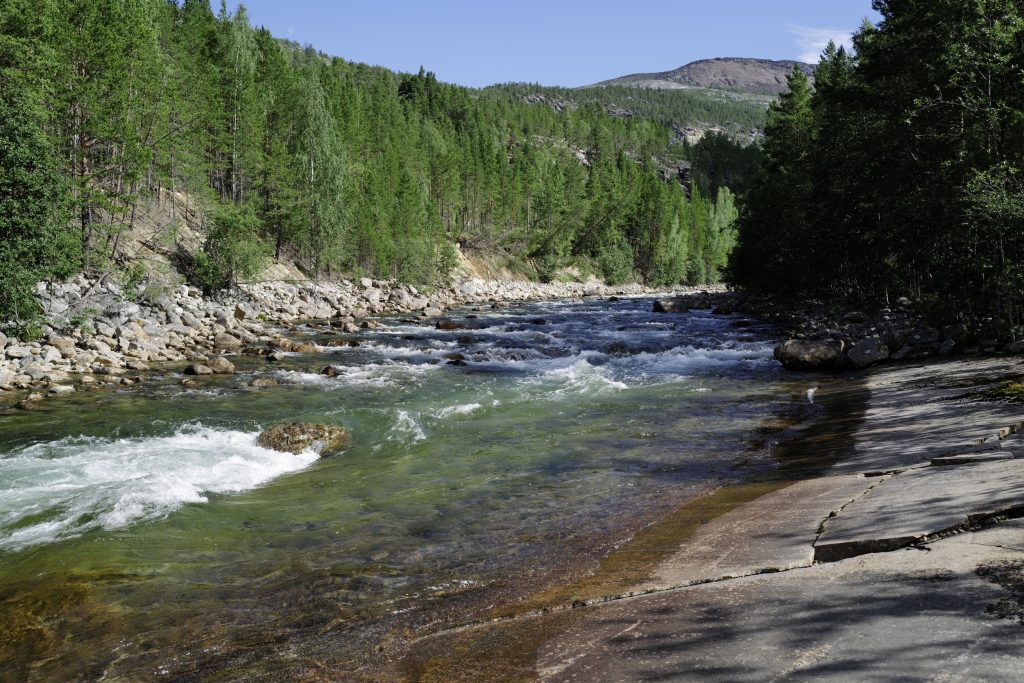

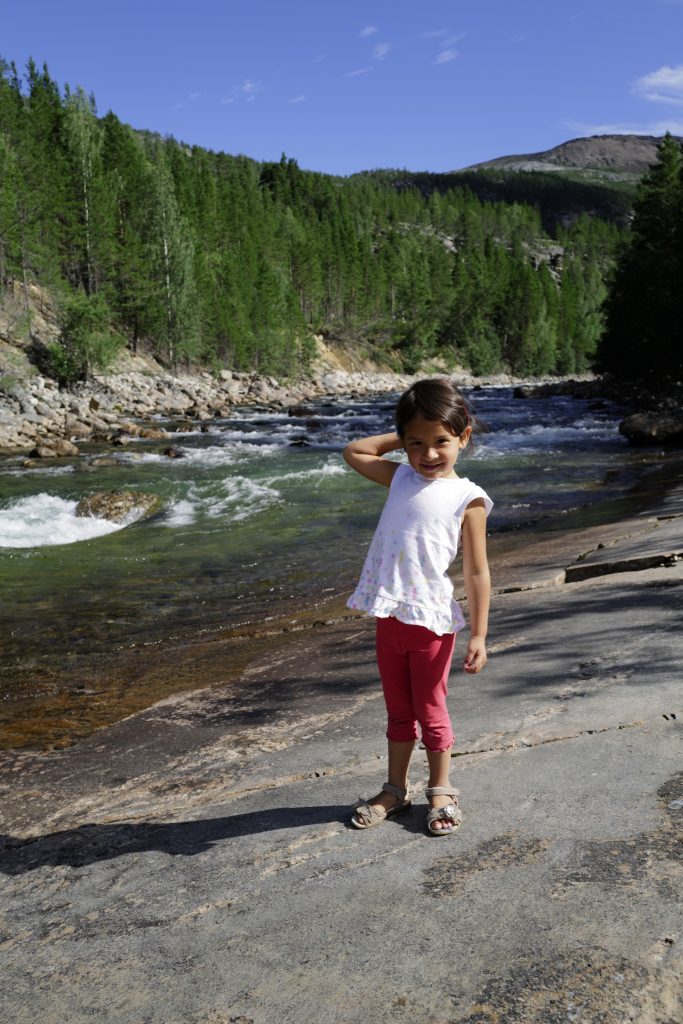
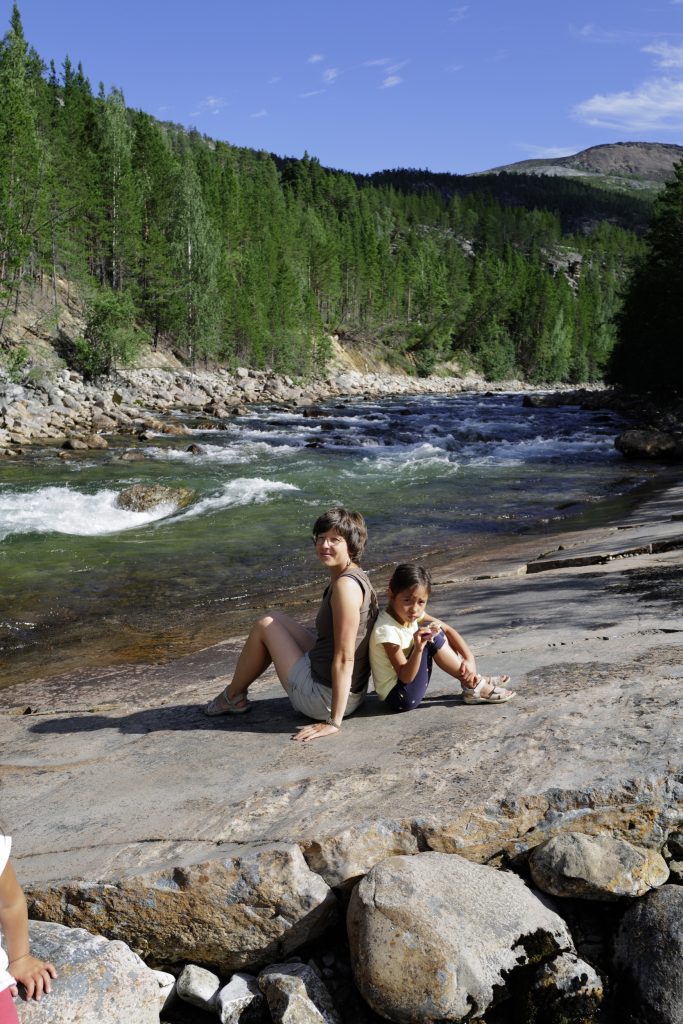
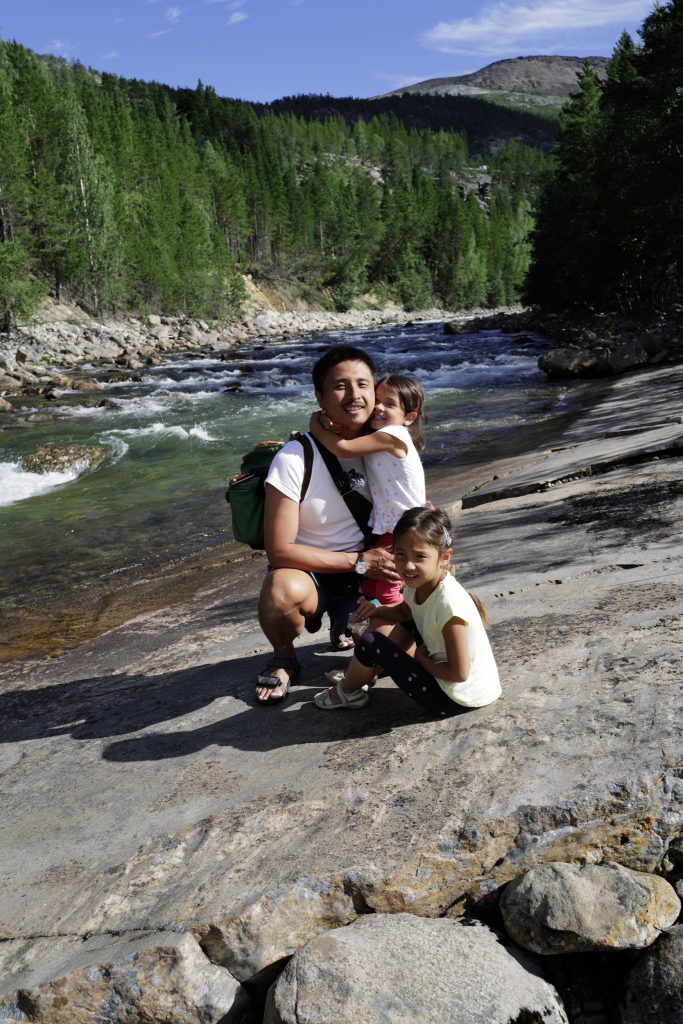
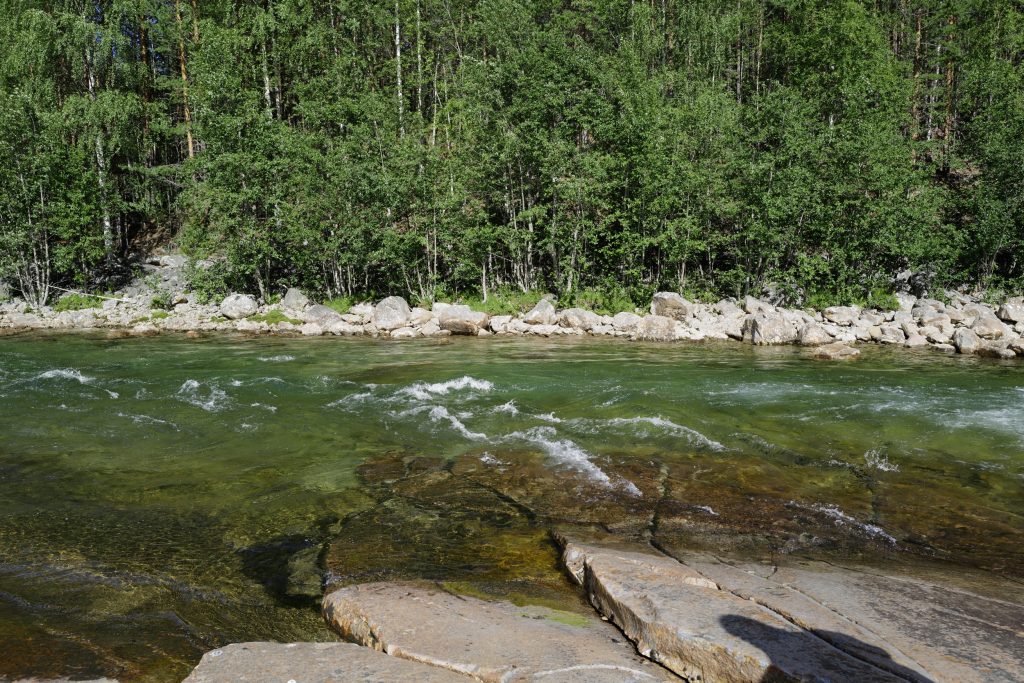

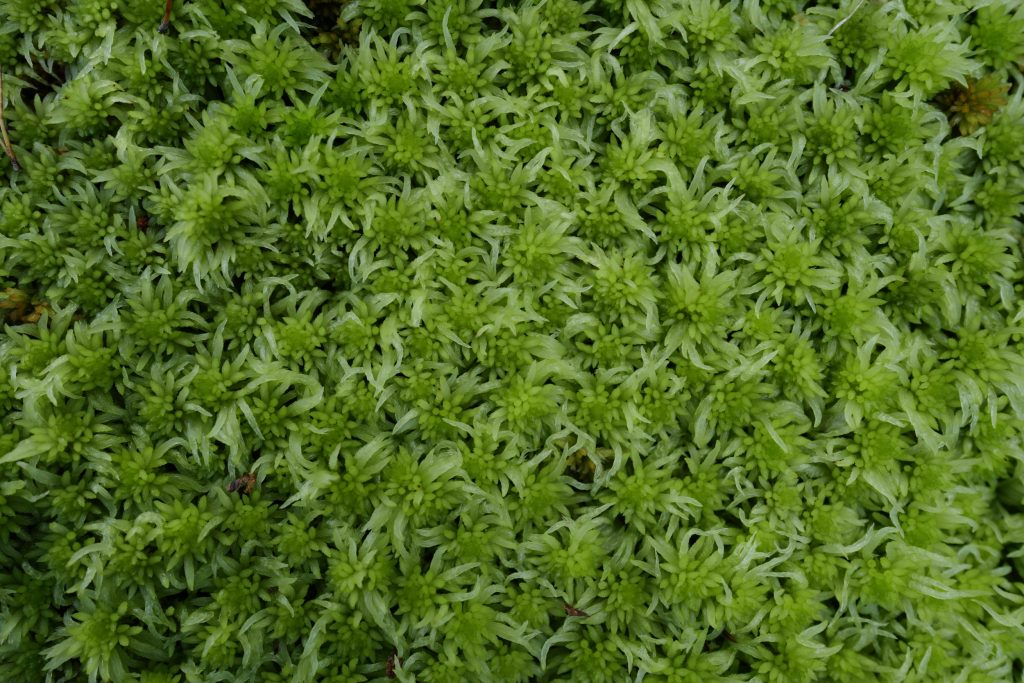
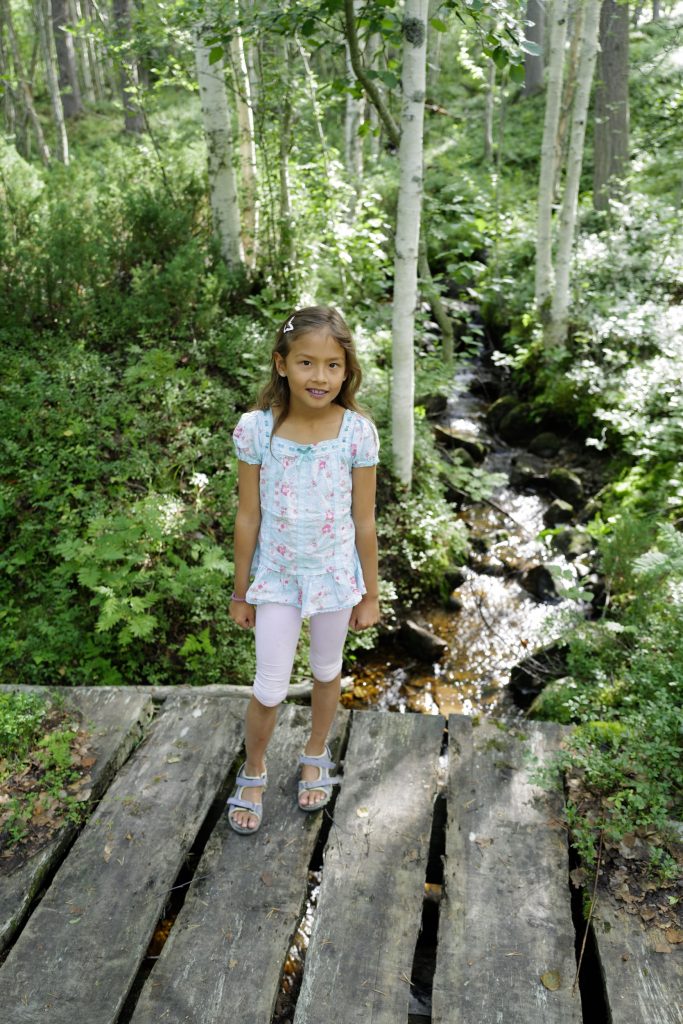

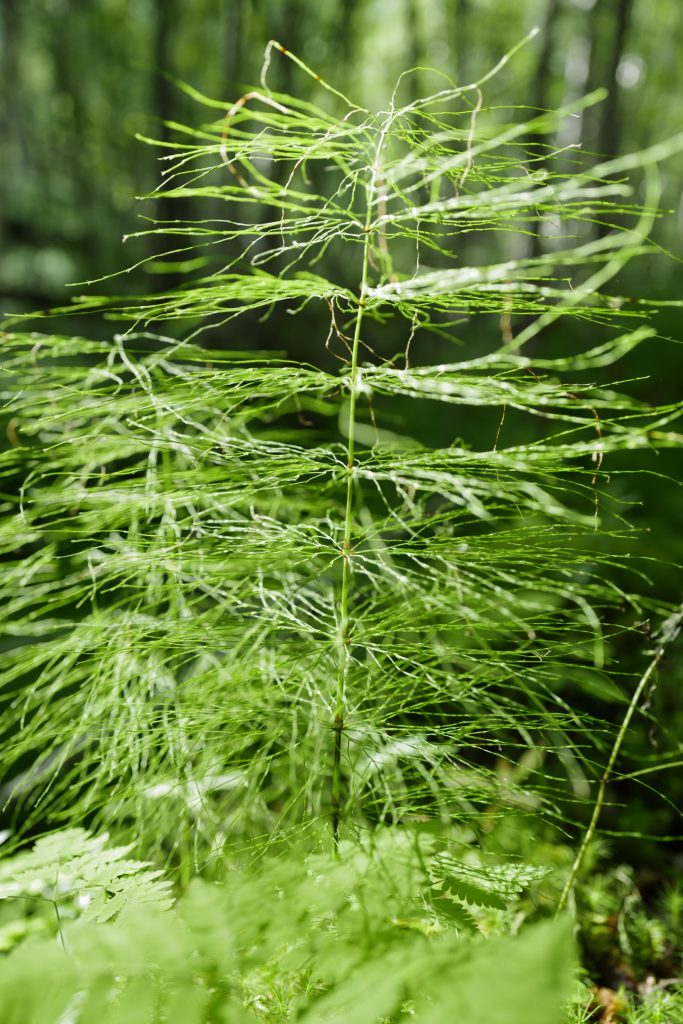
After refreshing ourselves with a water melon, we hiked up directly along the massive waterfall.


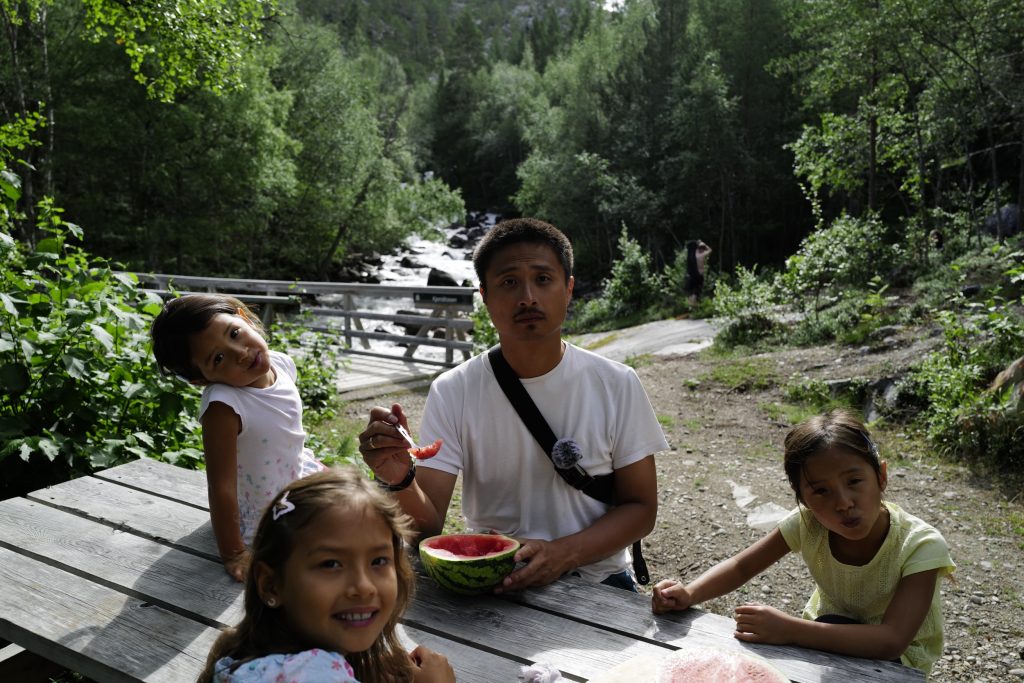

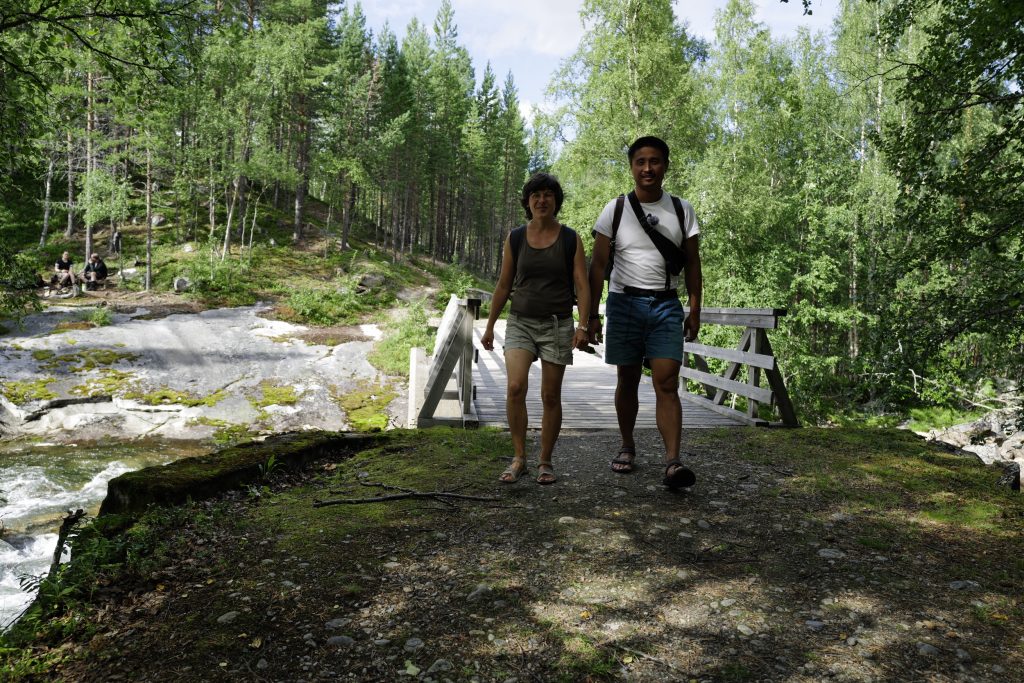
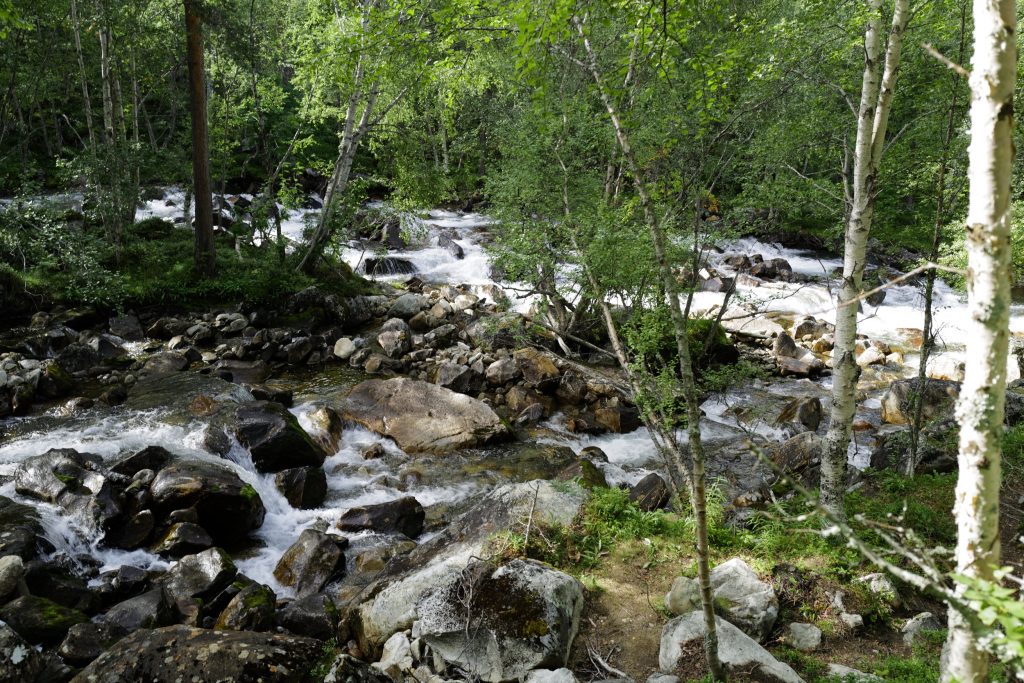

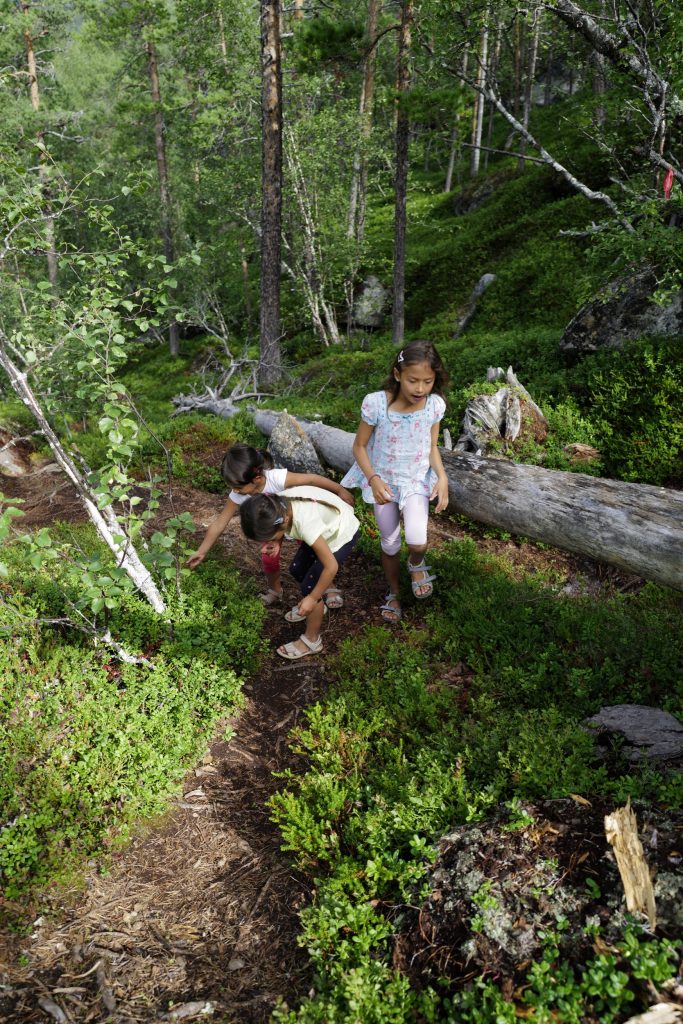


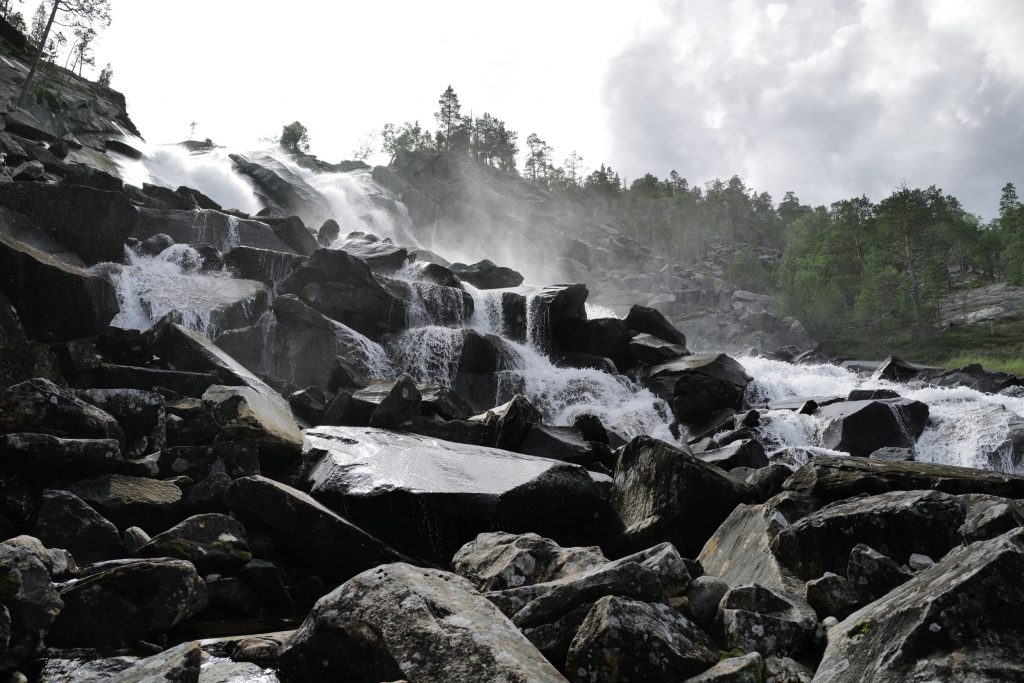
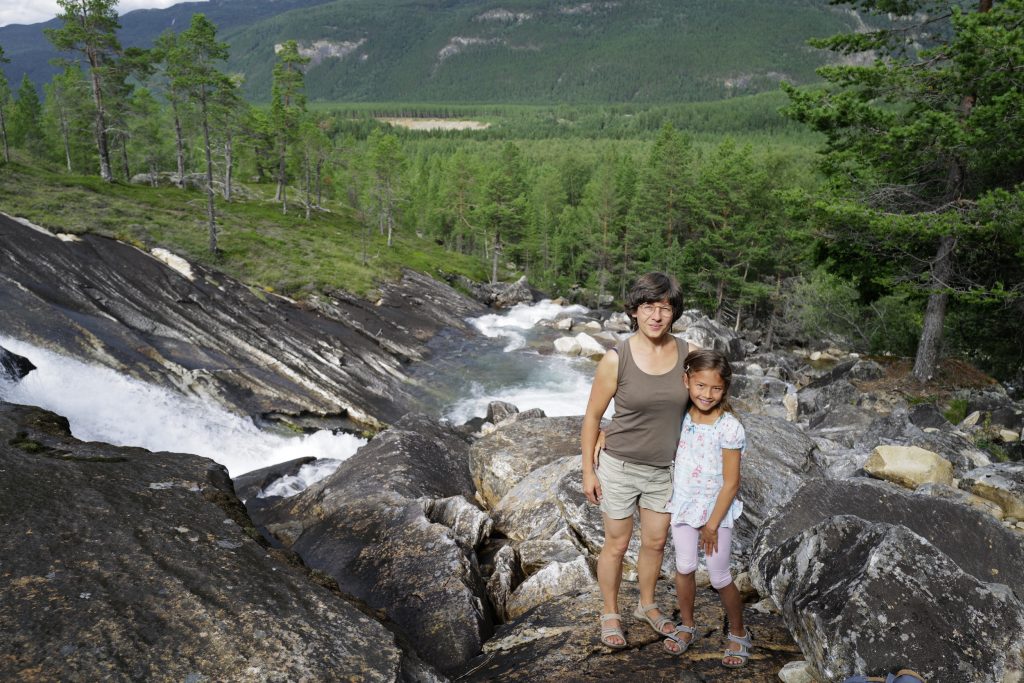
The 2 km back to the parking lot were on a wide dirt road and rather boring.
We spent the night by a river further South with waterfall view. In the mud we discovered moose (?) tracks.
The next morning, Alan was brave enough to take a bath in the cold river.

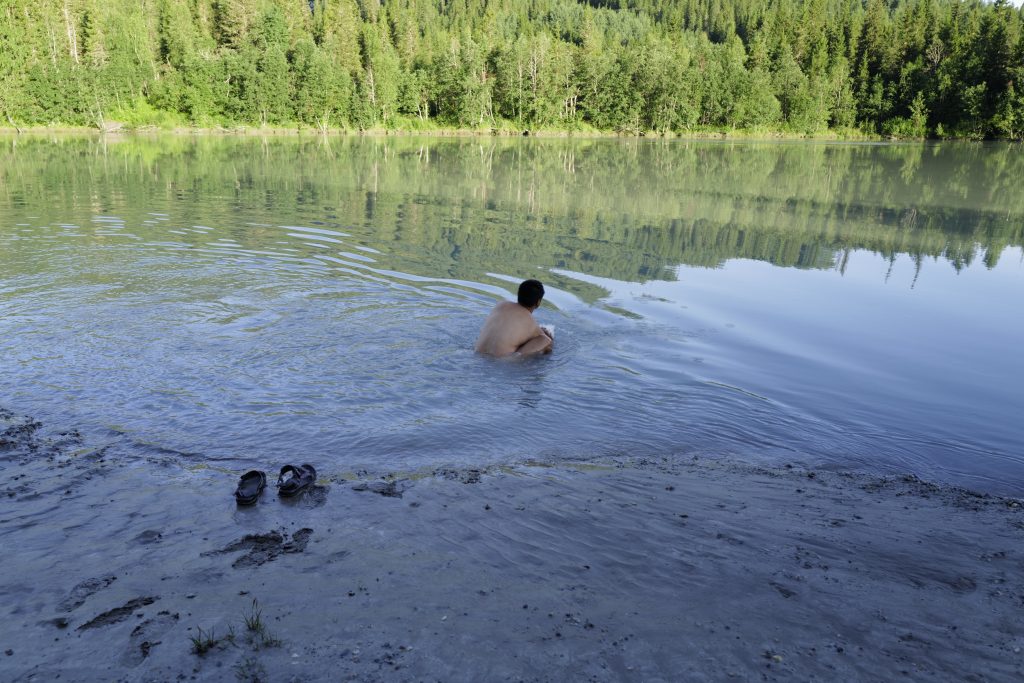

We took a boat to cross the lake Svartisvatnet. On the other side, we started a hike over a rocky mountain – first to a gigantic water fall, then to the magnificent glacier Svartisen – the second largest on Norway mainland.

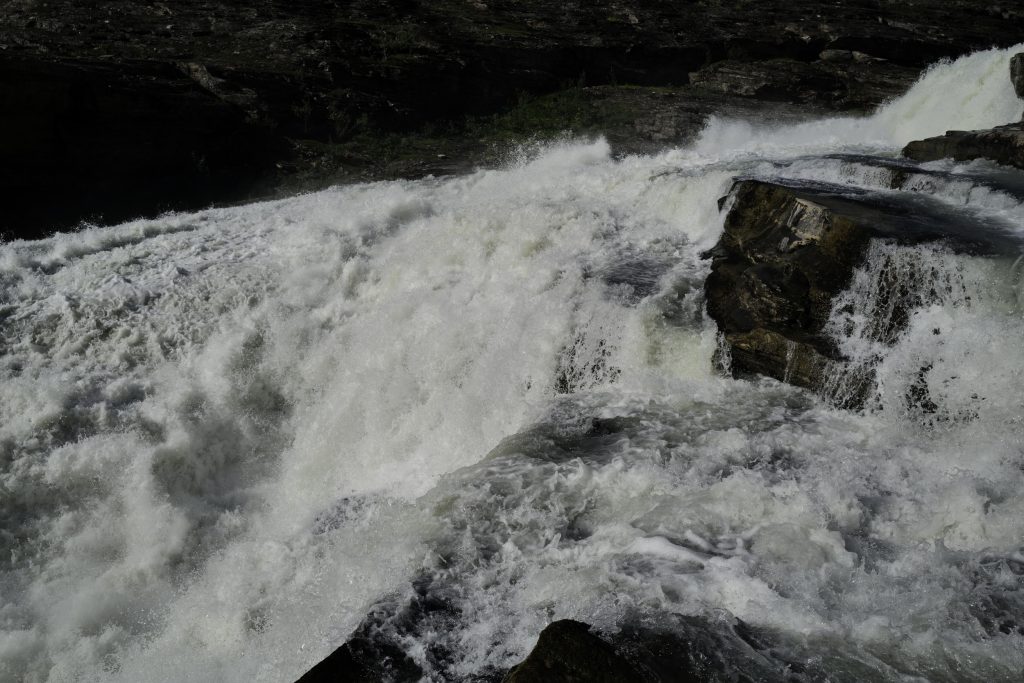


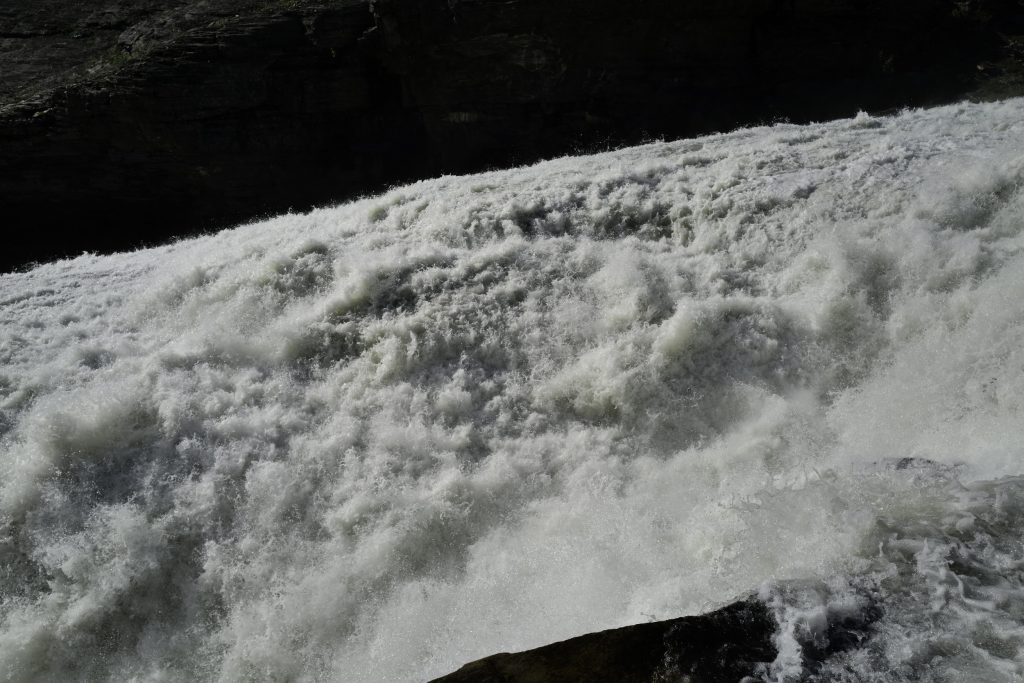
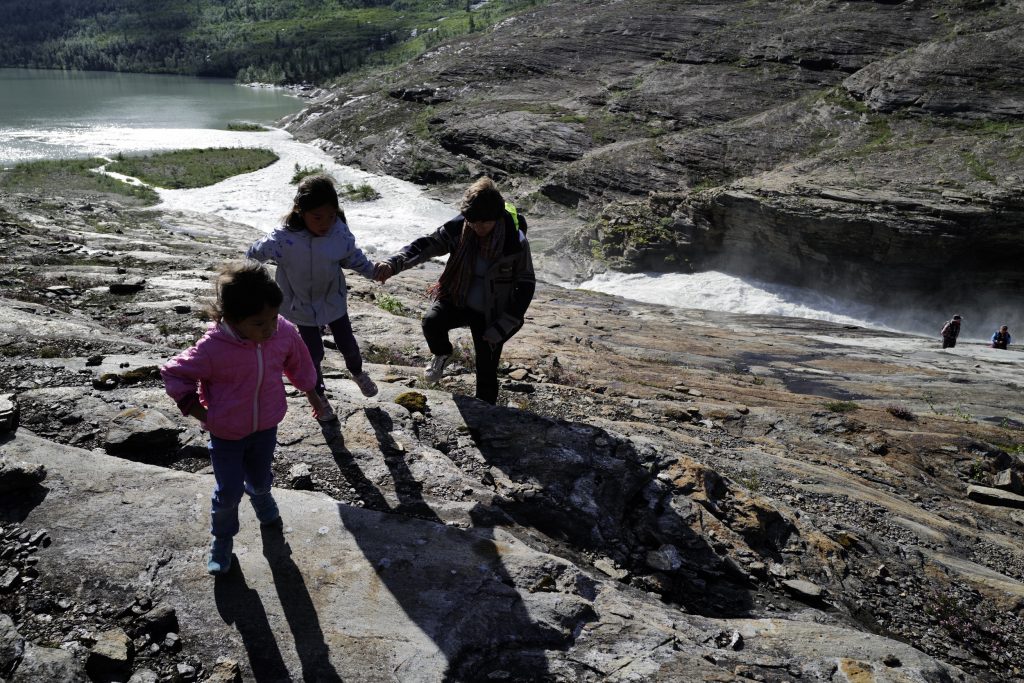
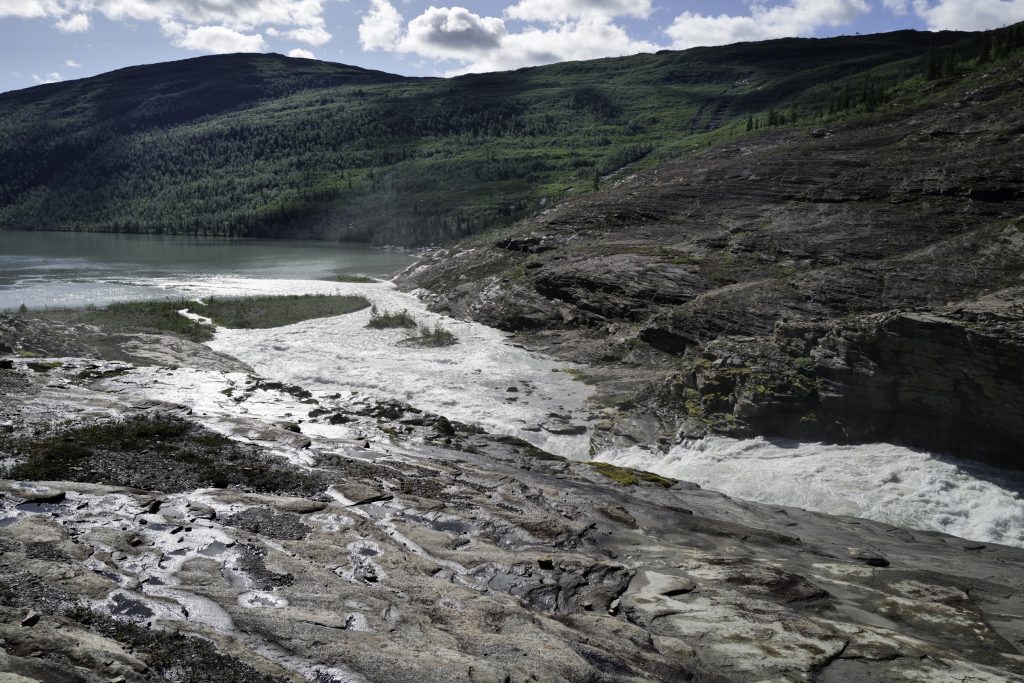

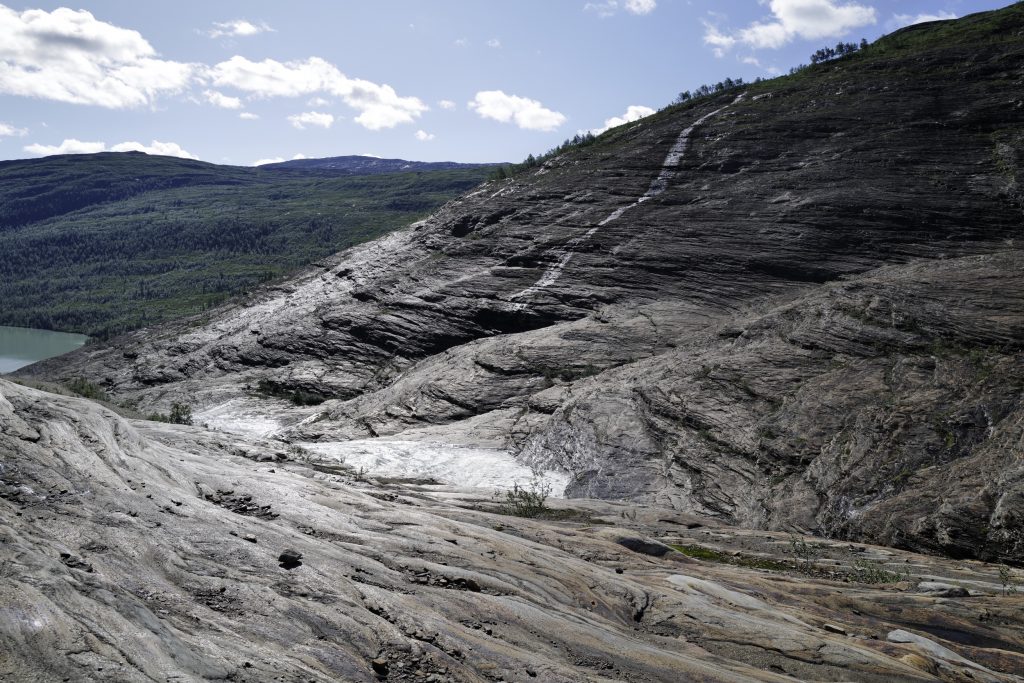
We hiked to the most famous of Svarisen‘s 60 glacier arms – Austerdalsisen.
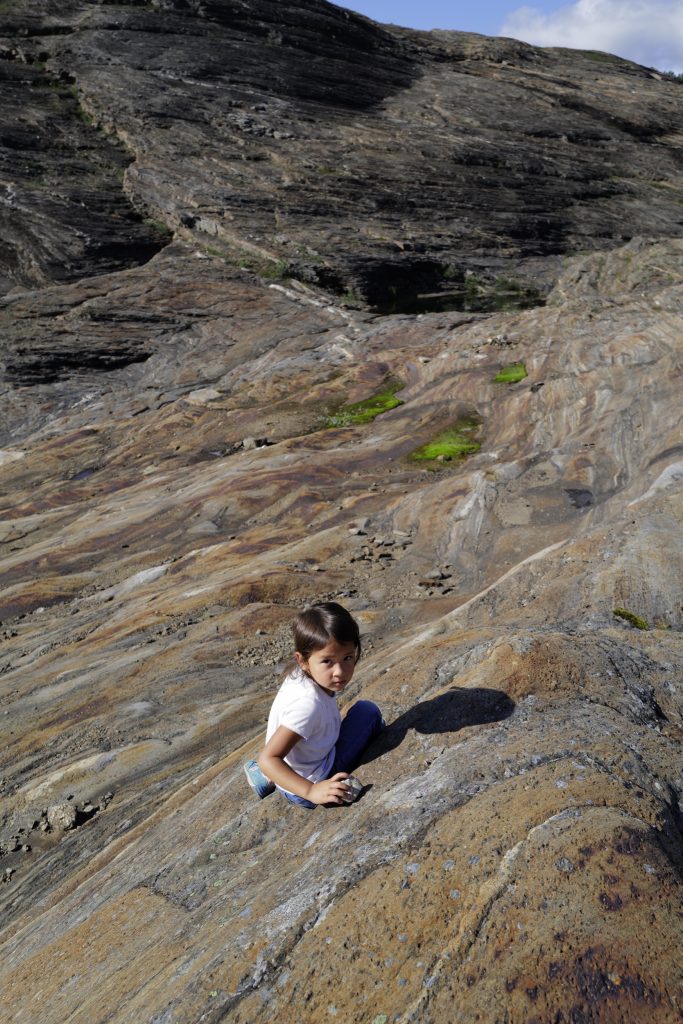
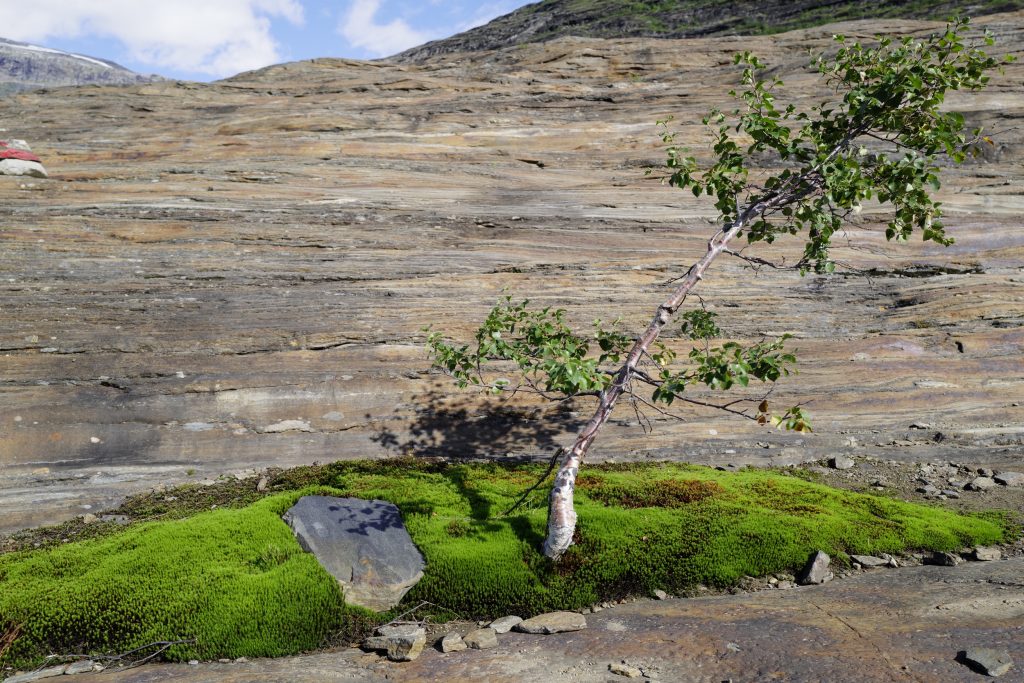

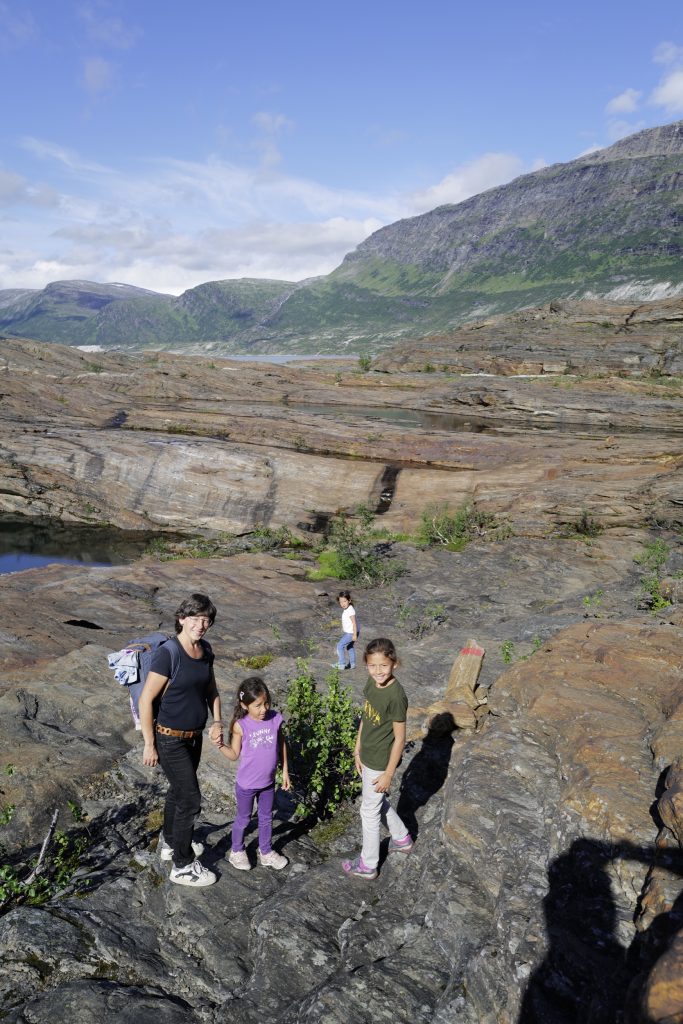
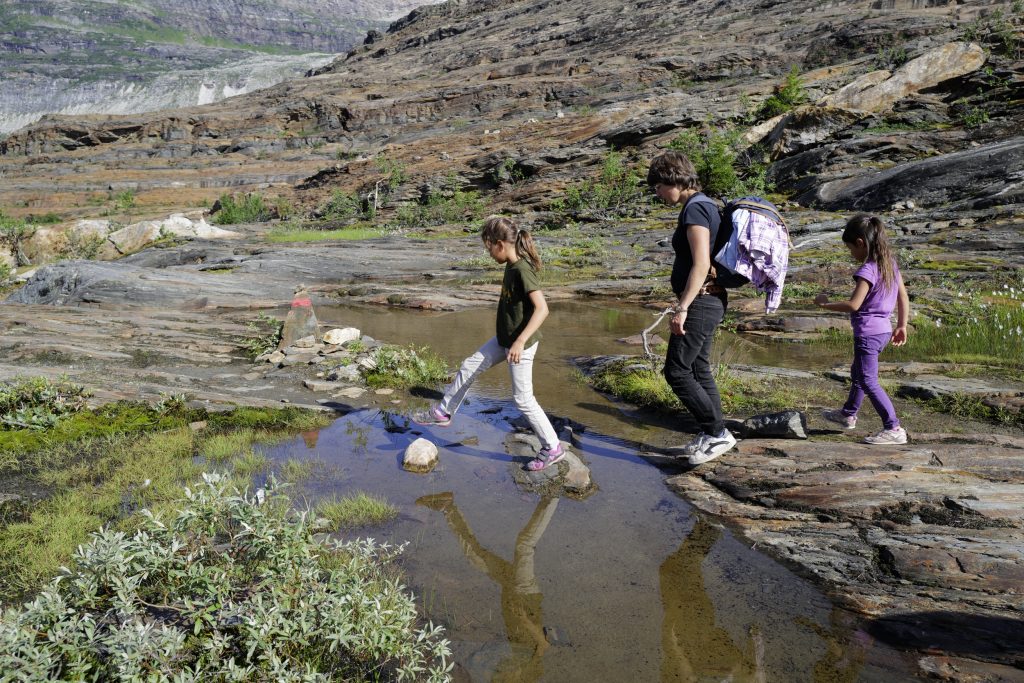
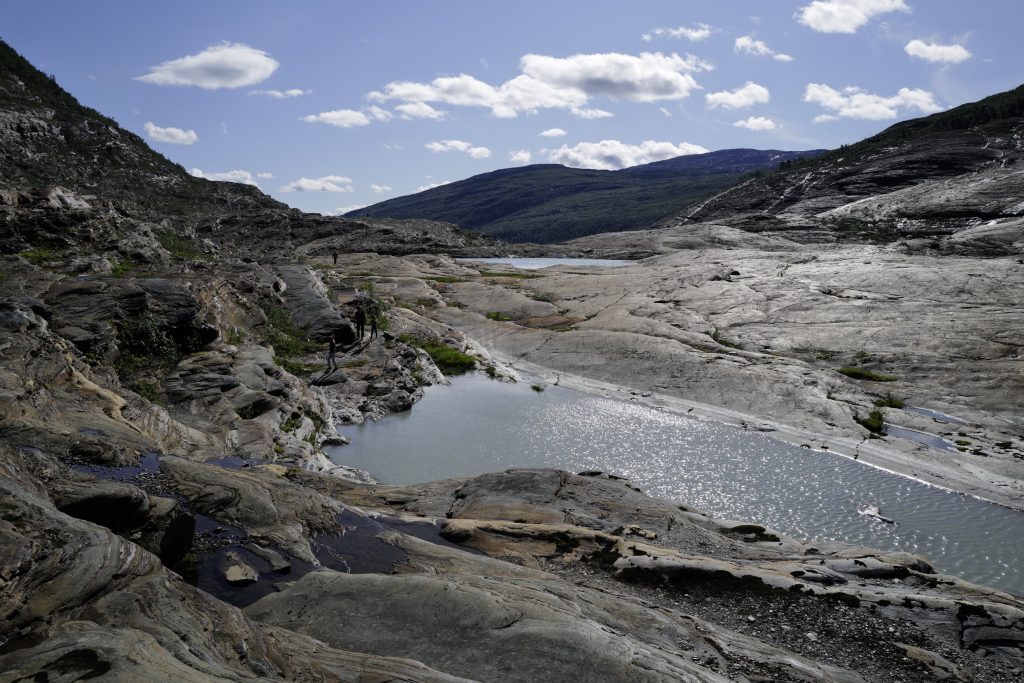

Every year the glacier decreases in size due to global warming. Ten years ago, it still touched the lake, now it was a couple of hundred meters away.
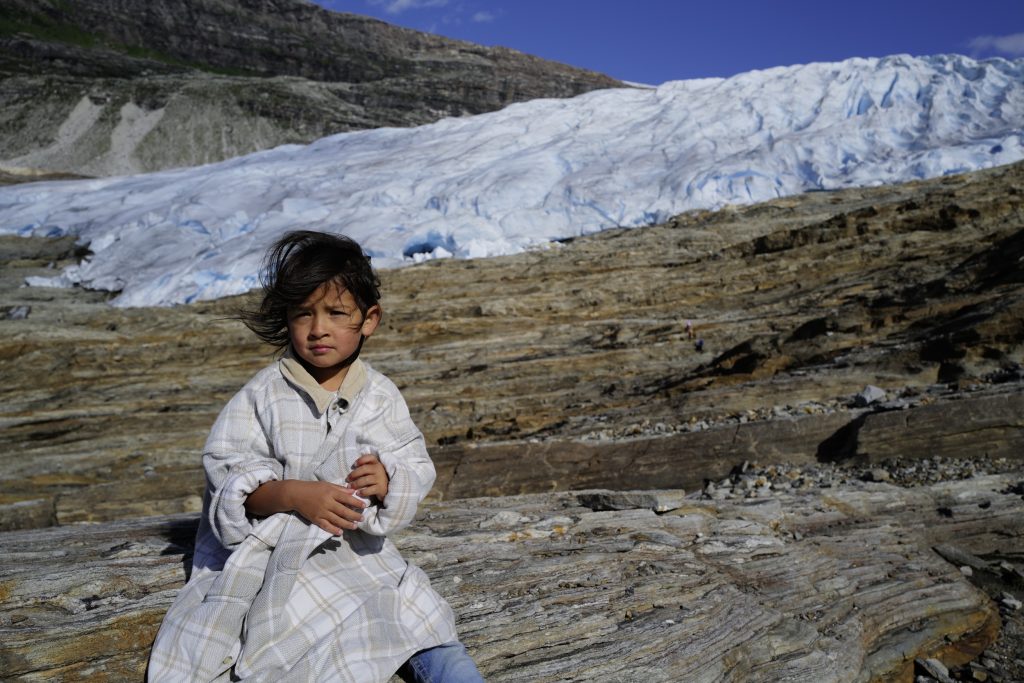
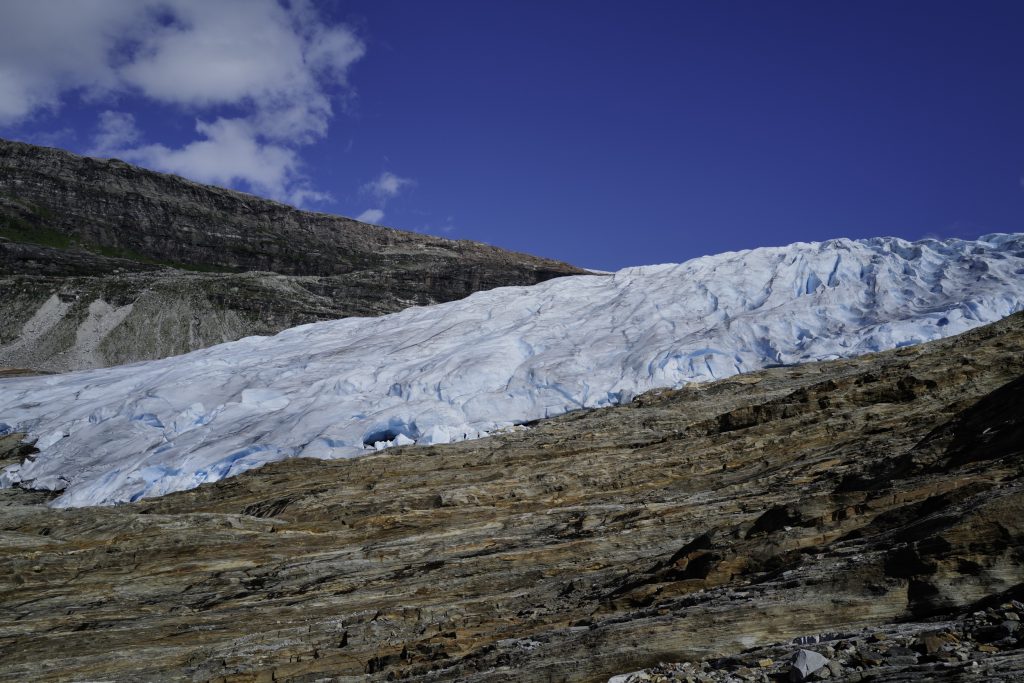
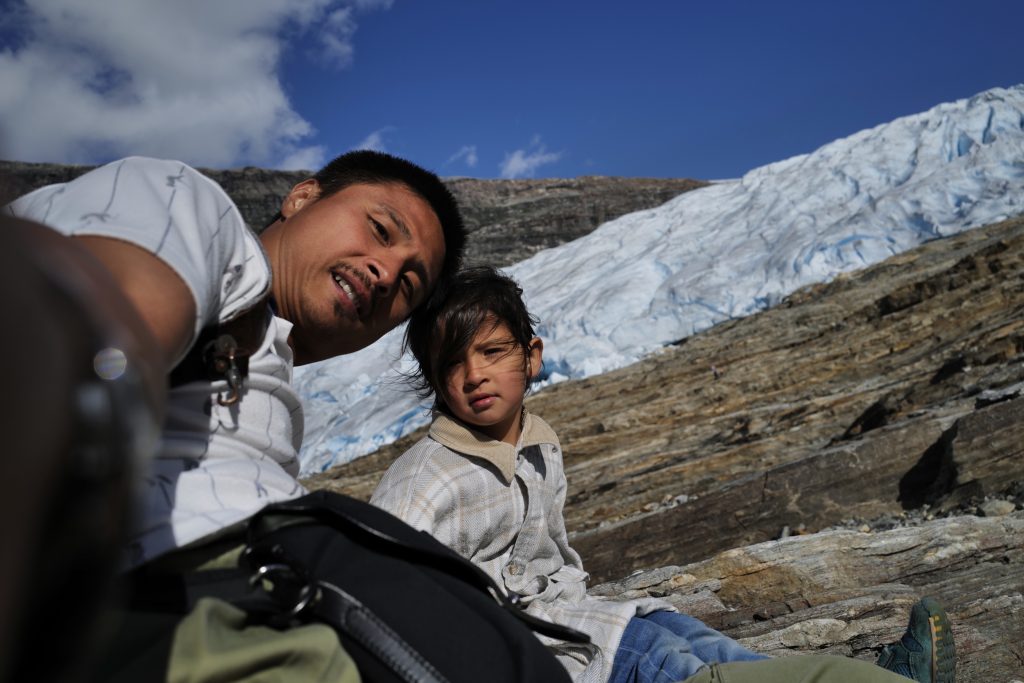

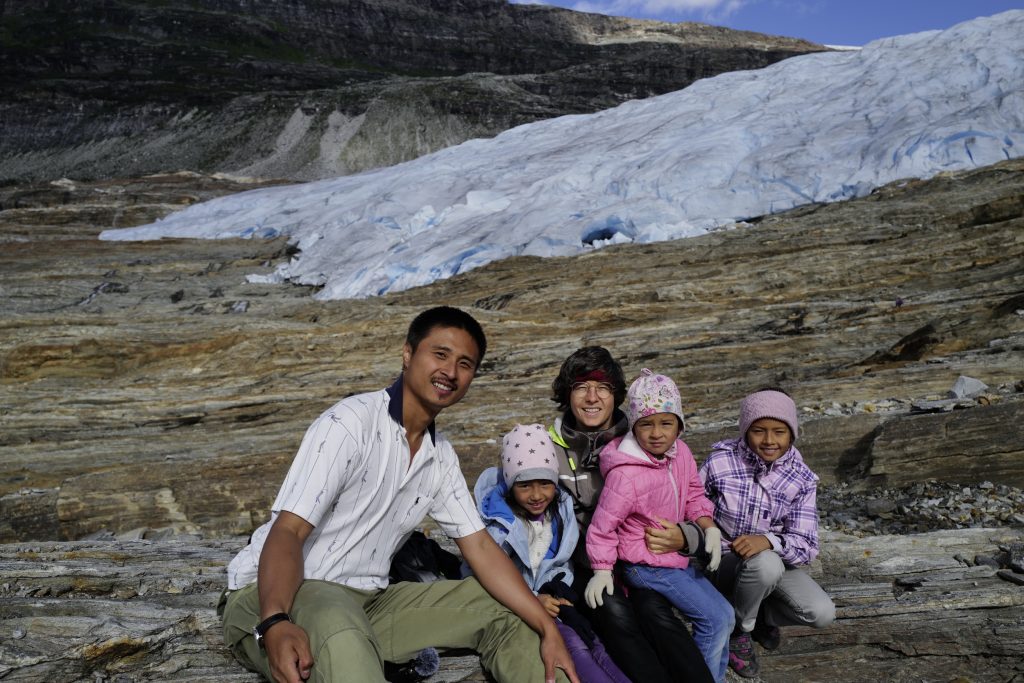

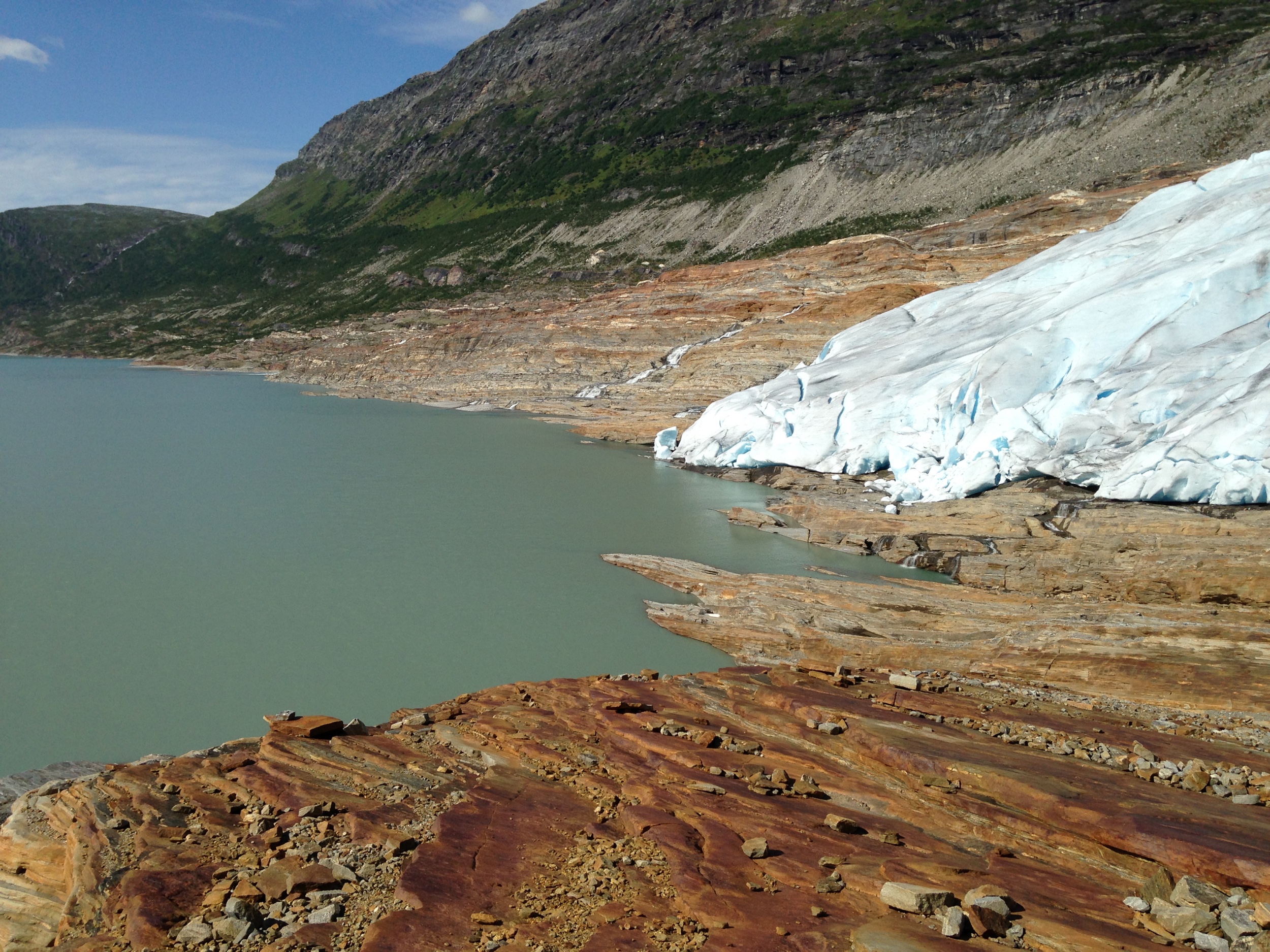
That‘s why the 3 km to the glacier indicated on the signs were nowadays around 2 km more.

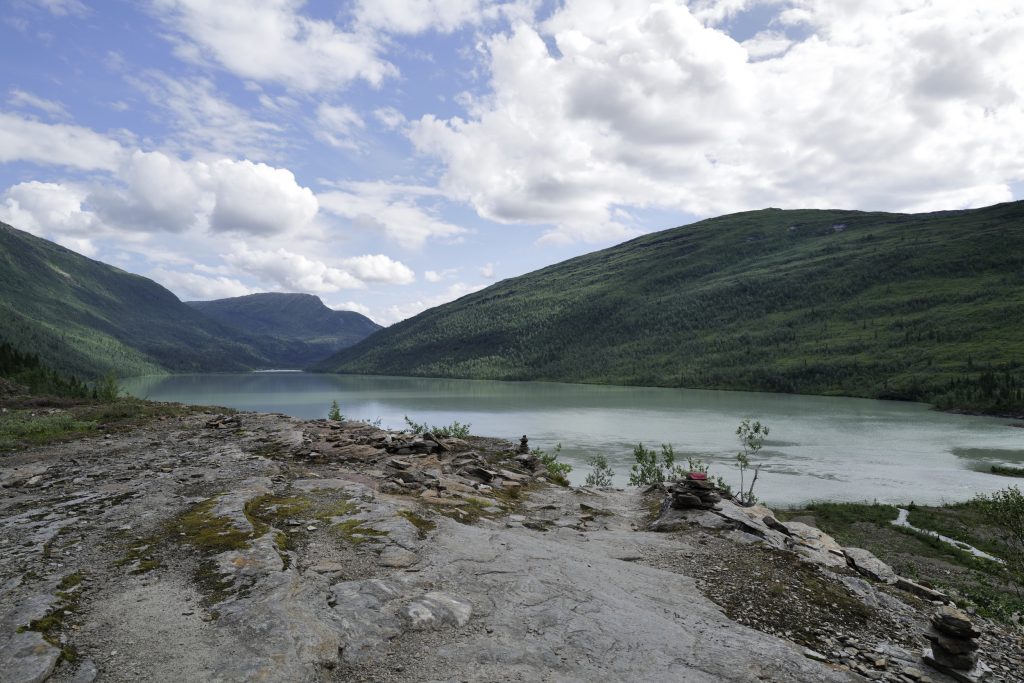
As we had booked a cave tour for the afternoon, we unfortunately didn‘t have enough time to really touch the ice and stand under the glacier to perceive its immenseness. We had to catch our ferry back to the parking lot.
Once we were all in the car, it started pouring. We almost hit an approaching car in a curve. That‘s how fast Alan went on the narrow winding road up to the cave Setergrotta. The young guide from Hungary and the Nowegian couple who were also one the tour were nice enough to wait for all of us getting dressed in overall and helmets with flash lights.
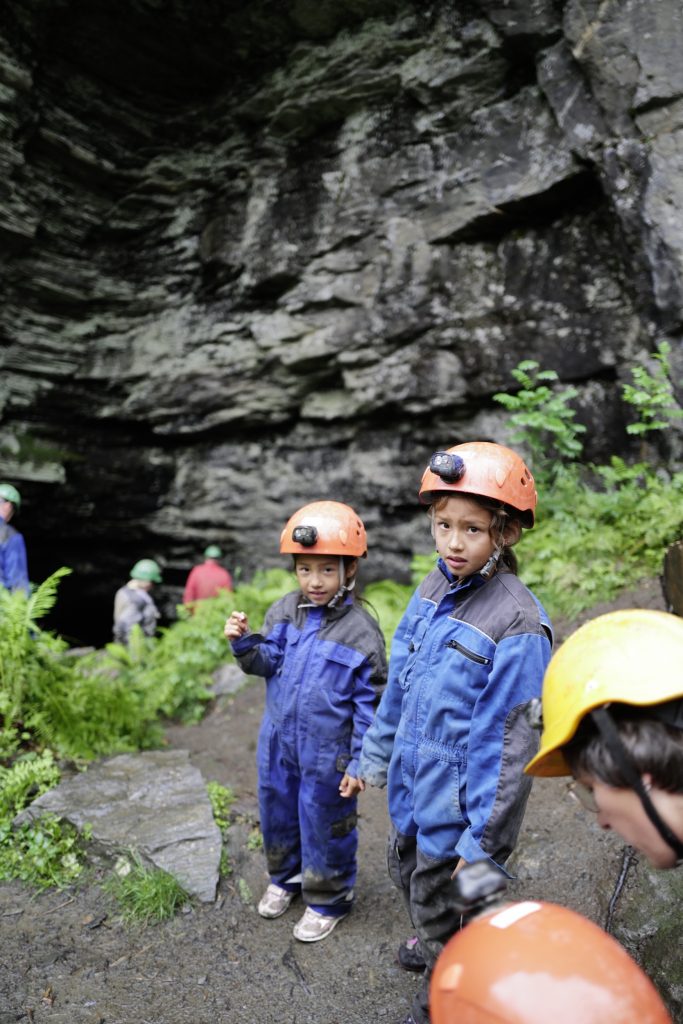
We first walked on a very muddy (It had just stopped raining) path to the entrance of the cave.
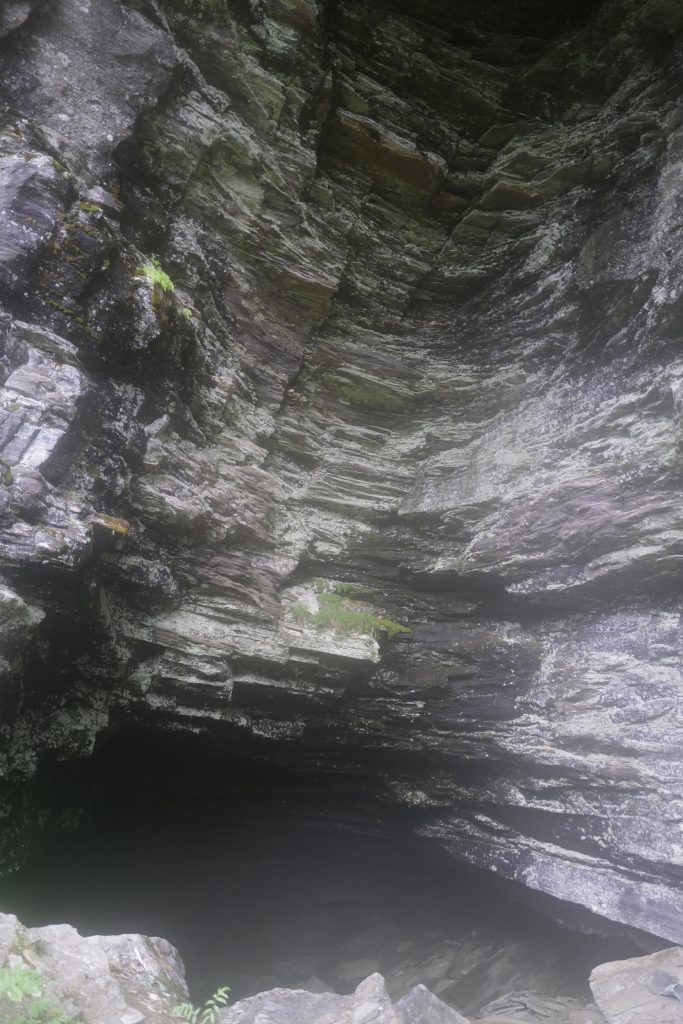

The cave was discovered rather late – around 1900 – because it had been covered by ice. The name stems from the nearby farm ‚Seter‘ whose farmers discovered the cave.

After we had climbed down some big rocks, there was really no more light than from our flash lights and it was only about 0 degrees.
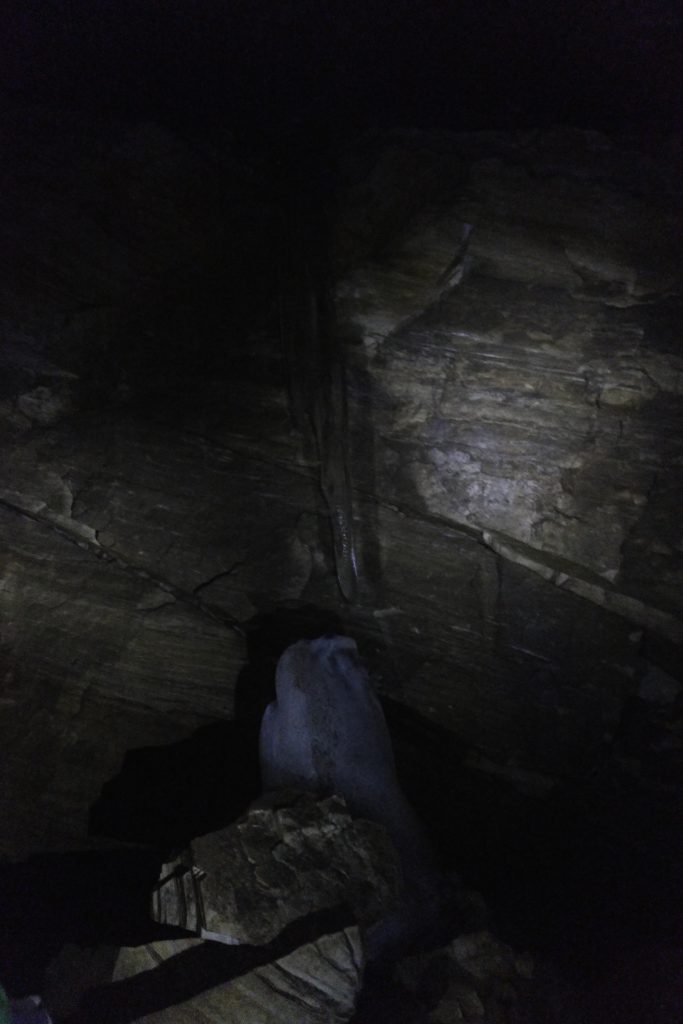
We saw a frozen waterfall, feeding into the underground river.



We were surprised that it the rest of the passing was actually more crawling over muddy rocks, which was much easier for our little ones. We constantly banged our helmets on the low ceiling or protruding rocks.

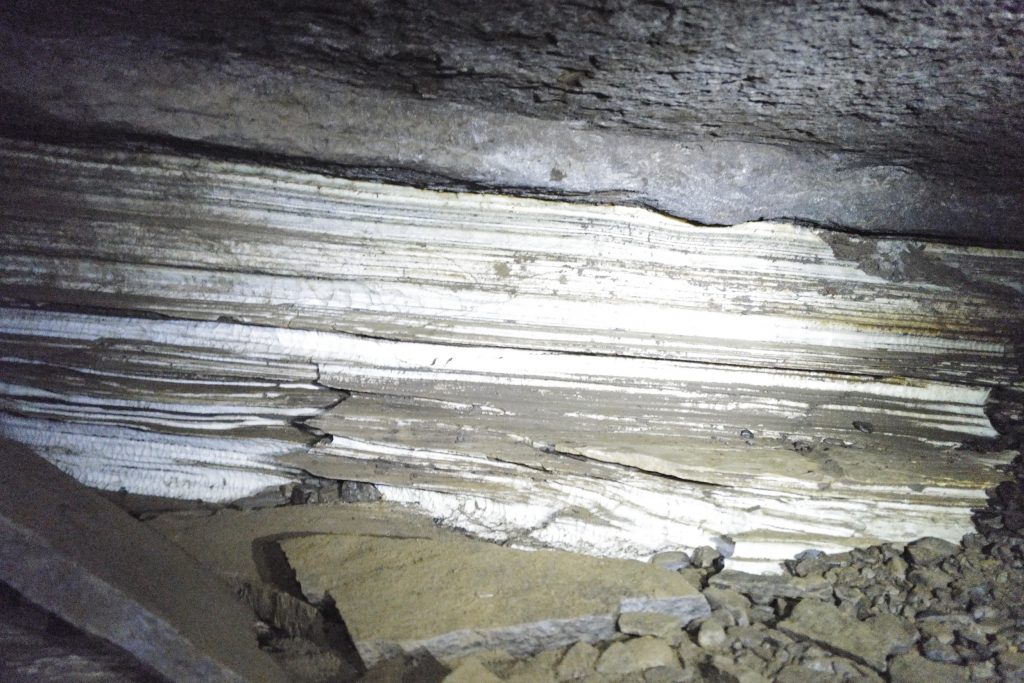
A beautiful part of the cave was the marble passage: layers of different shades of white and brown with different latitude.


Magda, Erna, and I tried a very narrow curvy tunnel passage. It was difficult to find a gap big enough for my helmet and more than once I thought I would get stuck. I was just a too big caterpillar. The girls slipped through the tunnel much faster.
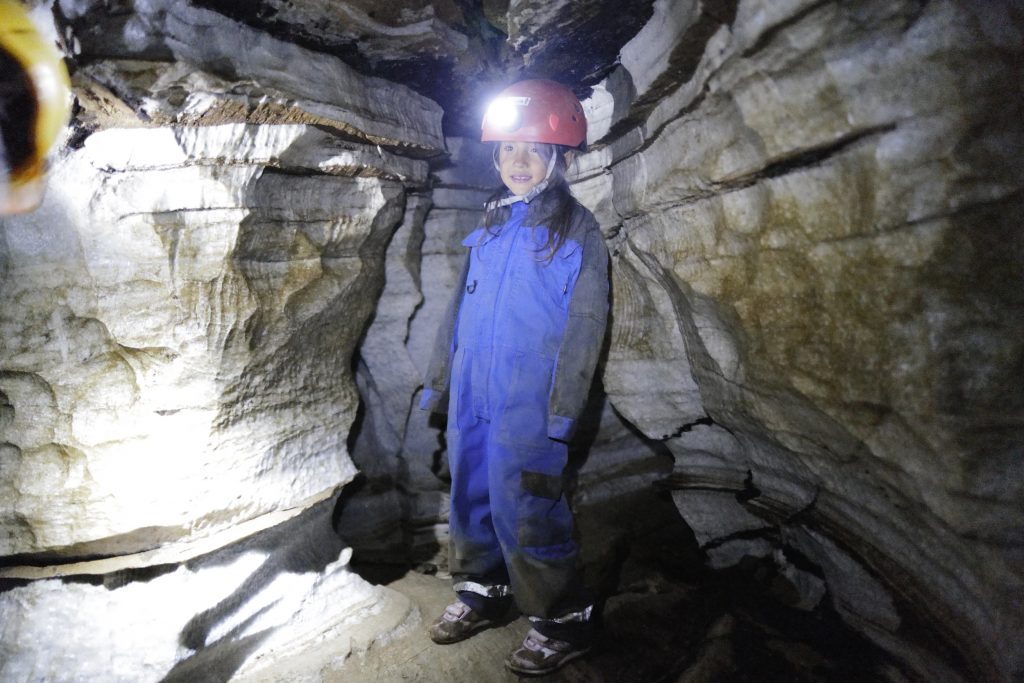
Our fingers and toes were freezing but especially Erna and Magda enjoyed going first, playing path finder.
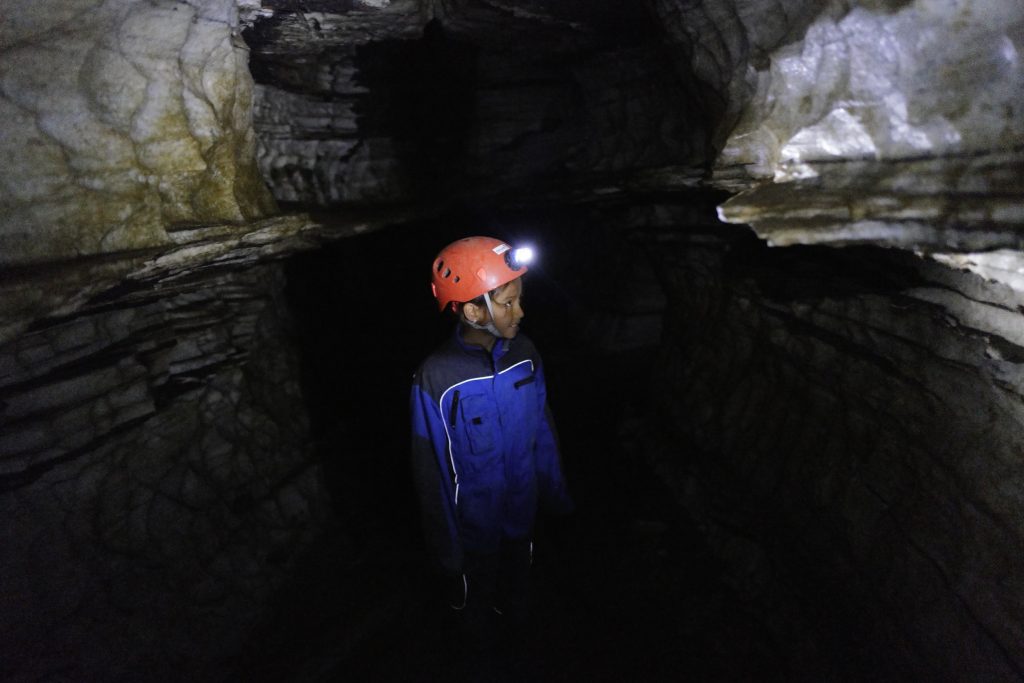

At one point, the guide asked where we should continue – left or right? Erna managed to find the slim slit of the „mailbox“ straight up through some rocks. She was very proud. For us adults, it was quite some challenge to push ourselves through the narrow gap.


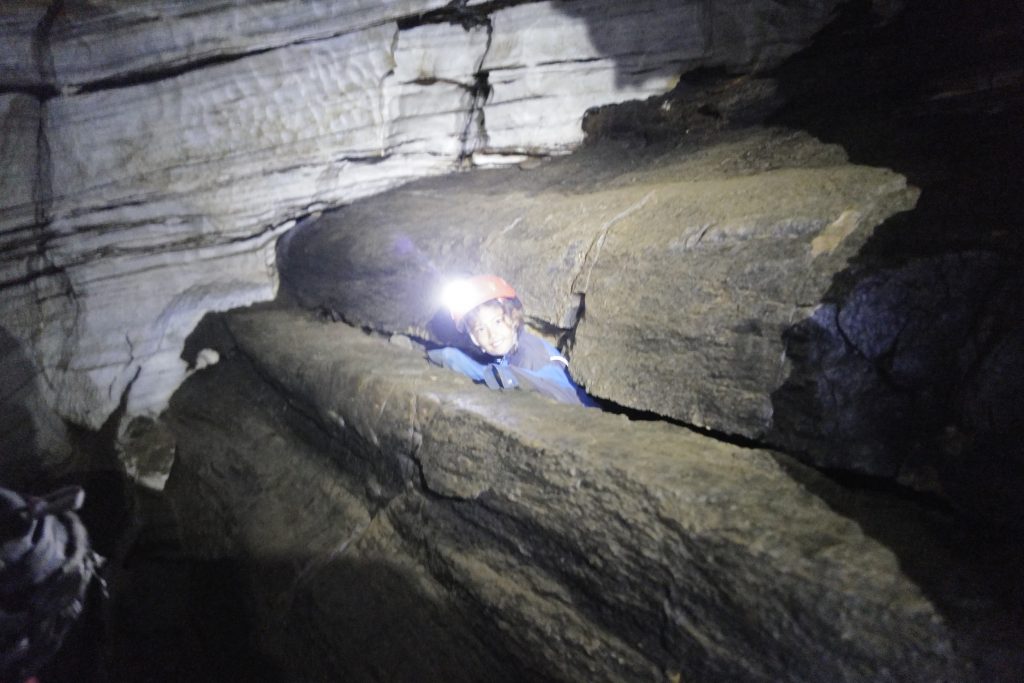
Everybody was happy to see daylight again and walk at more than 10 degrees Celsius.


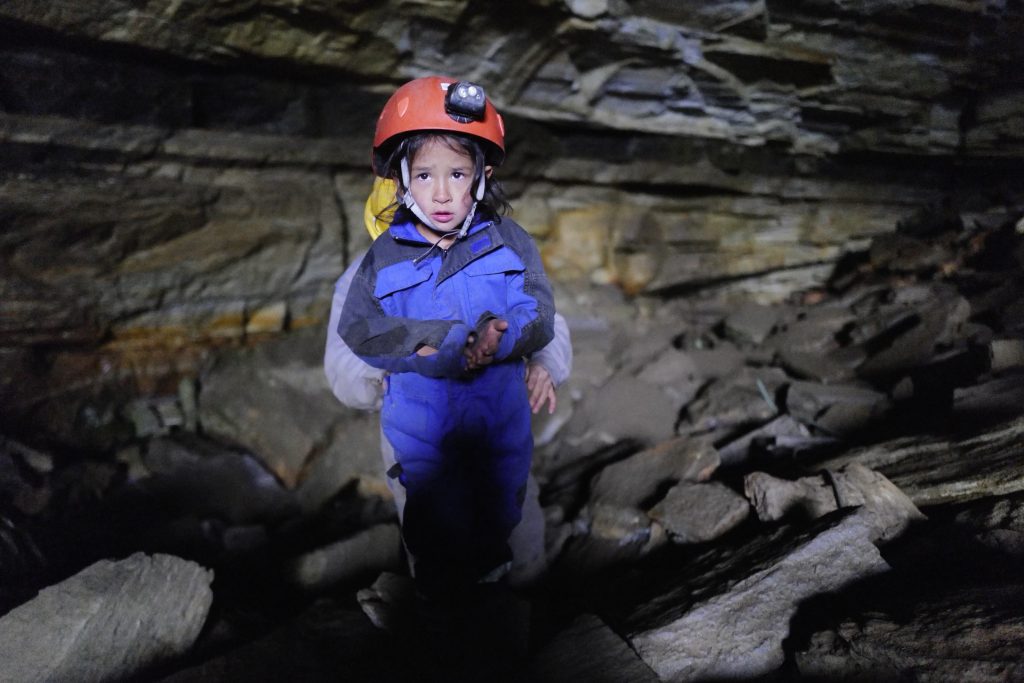

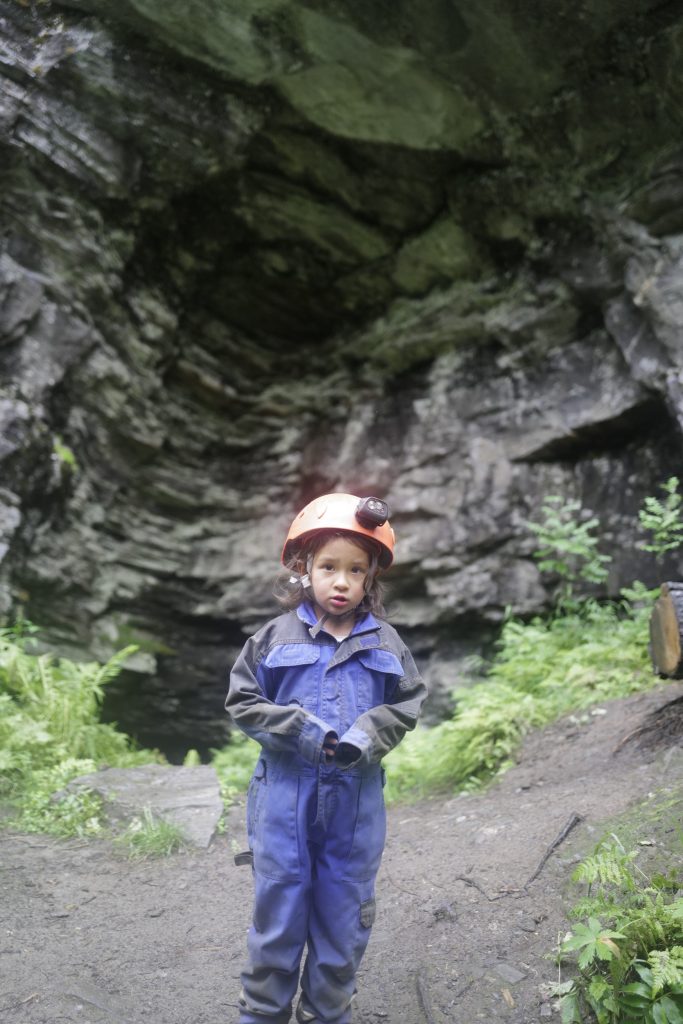
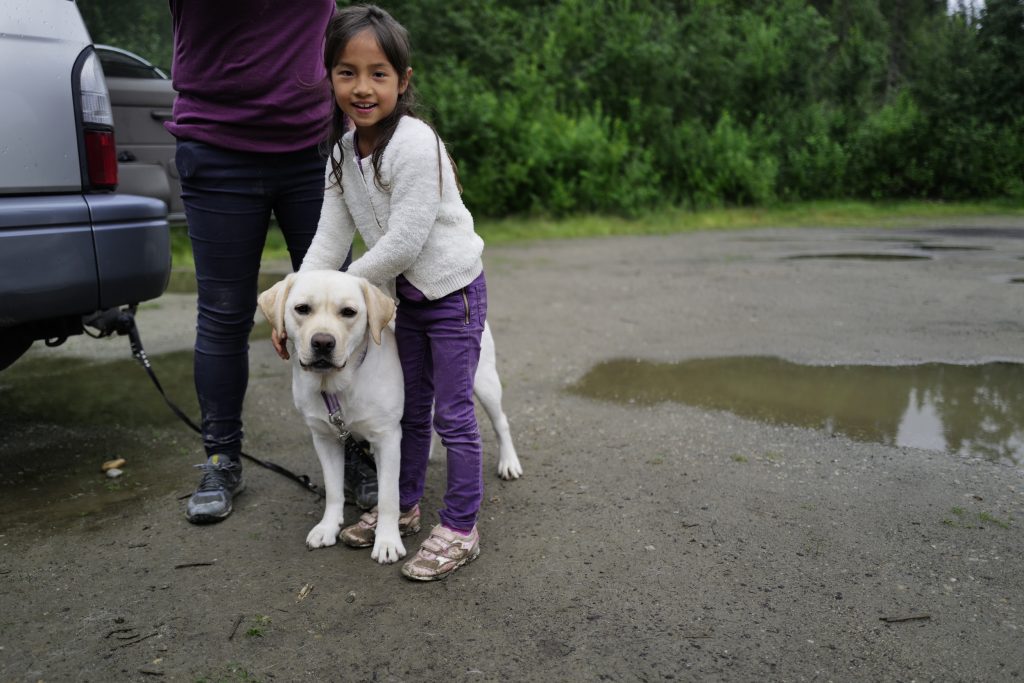
We frequently see road work being done in the middle of the night: grass mowing, construction work. Probably, the Scandinavians wan to use all the time they have with dry and mild weather because the winters are so long.
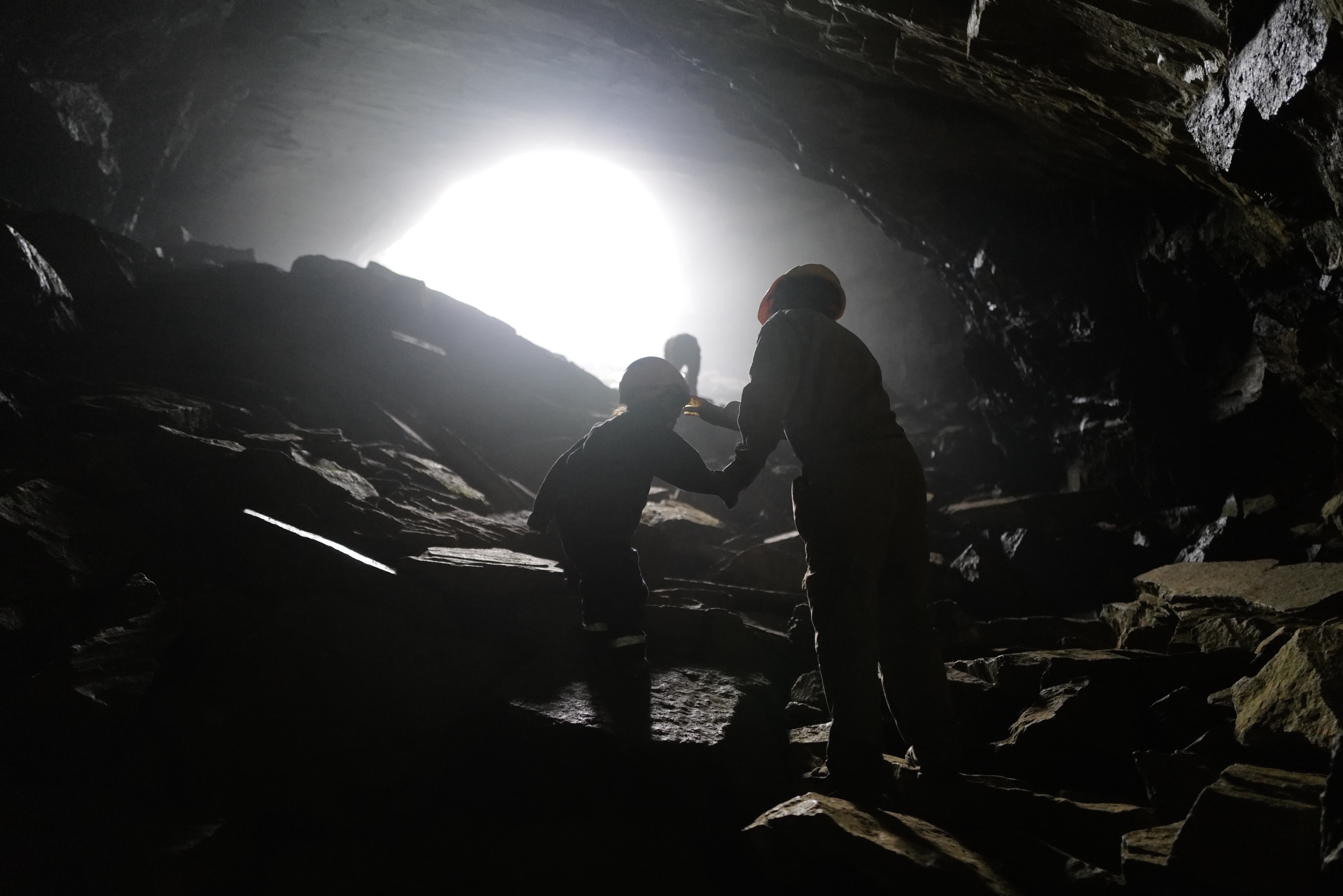
Leave a Reply